PLAY LIKE AN ENGINEER



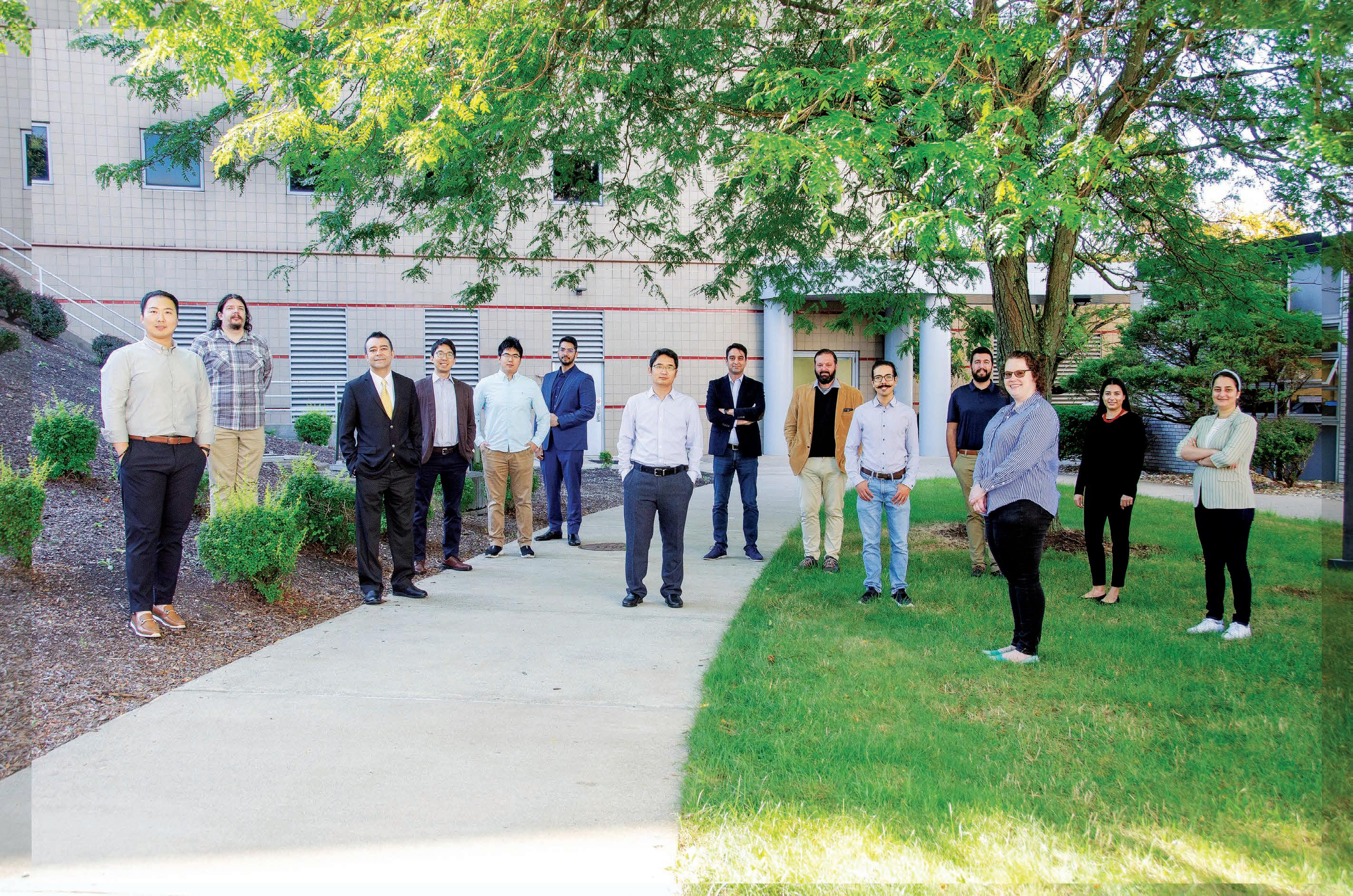
Amr
Assistant
Lane
The Statler College welcomed 16 new faculty members to kick off the 2022-23 academic year. The cohort brings a tremendous amount of talent to the University and will bolster the College’s growing research programs. Learn more about the new Mountaineers at directory.statler.wvu.edu/new-employees.

As engineers and computer scientists, we are relentless in our pursuit to provide a better, secure, healthier, and sustainable future for the next generations. In this edition of Engineering WV Magazine, we are excited to share stories of researchers who are pursuing reliable renewable energy sources, pioneering space weather research and forecasting, combating drug trafficking, and developing technologies to keep our military members safe. The Statler College of Engineering and Mineral Resources is proud to support these dedicated individuals as they build a better tomorrow.
However, engineers and computer scientists are not all work and no play. In this issue, we will also explore our student-athletes who go above and beyond to succeed in both sports and the classroom. You will read how the engineering discipline provides an edge to their dedicated sport and how balancing both engineering and athletics has prepared our students to tackle rigorous schedules and overcome challenging situations. It’s a privilege to guide these engineers, computer scientists and future leaders on their journey toward academic and athletic success.
I am incredibly proud of our students, faculty, staff and alumni since they set an example to the entire WVU Community and the world that greatness can be achieved through perseverance and determination. As Mountaineers, our curiosity and fortitude allow us to pursue world-changing discoveries and innovation. I am confident that we will continue to lead the way as we push the boundaries for what is possible to create a prosperous future. We are changing people’s lives through outstanding teaching, research, and service. This is an exciting time at the Statler College, and the future is nothing but bright!
Let’s go make a difference!
Pedro J. Mago, Glen H. Hiner Dean Benjamin M. Statler College of Engineering and Mineral ResourcesDEAN
Pedro Mago pedro.mago@mail.wvu.edu | 304-293-4157
DIRECTOR
Marketing and Communications
J. Paige Nesbit jpnesbit@mail.wvu.edu | 304-293-4135
DESIGNER
Ruthie Deely
WRITERS
Alayna Fuller / Brittany Furbee / Tara Heffernan Shelby Hudnall / Olivia Miller / Micela Morrissette Cassie Rice / Jake Stump / Adrianne Uphold
EDITORS
Angela Caudill / Kathy DeWeese Brittany Furbee / J. Paige Nesbit
PHOTOGRAPHY
Jonas Bredu / Garrett Cullen / J. Paige Nesbit Brian Persinger / Jennifer Shephard
ADDRESS
West Virginia University
Benjamin M. Statler College of Engineering and Mineral Resources PO Box 6070 Morgantown, WV 26506-6070 statler.wvu.edu
CHANGE OF ADDRESS
WVU Foundation / PO Box 1650 Morgantown, WV 26504-1650 e-mail: info@wvuf.org www.connecttowvu.com
ONLINE MAGAZINE AND CURRENT NEWS
Visit media.statler.wvu.edu for the online version of EngineeringWV magazine, additional stories and current news.
MISSION STATEMENT

The Statler College mission is to prepare students for success in their professional careers; to contribute to the advancement of society through learning, discovery, extension and service; and to stimulate economic wellbeing in West Virginia and the world through technical innovation, knowledge creation and educational excellence.
Engineering West Virginia is published twice each year, in spring and fall, for the alumni, friends and other supporters of the WVU Benjamin M. Statler College of Engineering and Mineral Resources.
Copyright ©2022 by the WVU Benjamin M. Statler College of Engineering and Mineral Resources. Brief excerpts of articles in this publication may be reprinted without a request for permission if Engineering West Virginia is acknowledged in print as the source. Contact the director for permission to reprint entire articles.



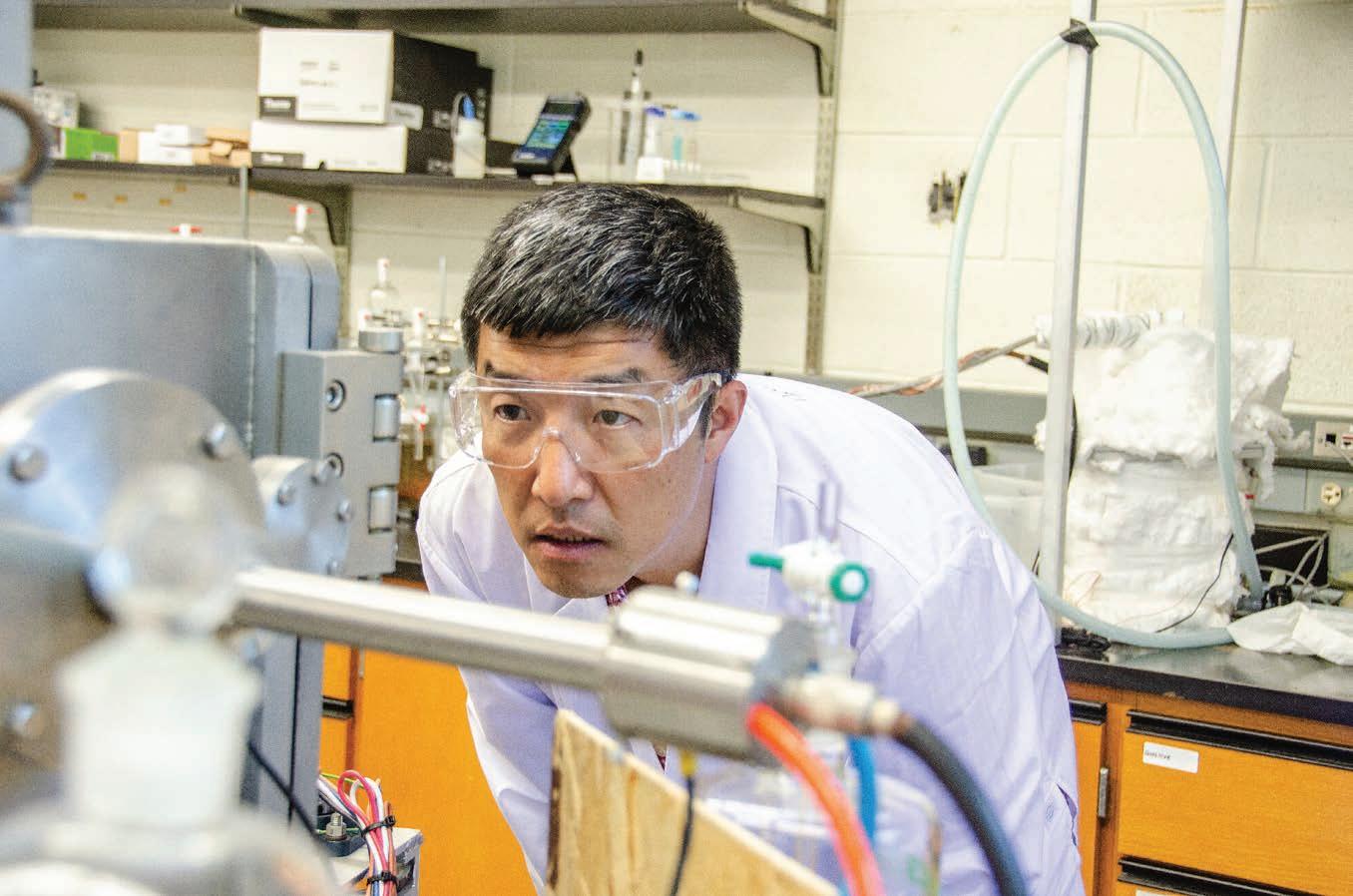
 WRITTEN BY MICELA MORRISSETTE
WRITTEN BY MICELA MORRISSETTE
Xingbo Liu conducts research at his WVU lab. The U.S. Department of Energy has awarded $2 million to support Liu’s development of high-entropy coatings capable of protecting the blades of gas turbines in power plants from the intense heat and corrosion of hydrogen combustion. Hydrogen combustion produces no greenhouse gases and technology like Liu’s may advance the emergence of a new energy economy in which green hydrogen is a predominant fuel source. (WVU Photo/Paige Nesbit)
, Statler Chair of Engineering, associate dean for research and professor in the Department of Mechanical and Aerospace Engineering, will help develop new, cutting-edge coatings for the blades of turbines used in large-scale power generation. These protective layers will be able to withstand the extreme heat and corrosion of hydrogen combustion but work with the principles and technologies of existing natural gas turbines, primarily in power plants.
The research is promising enough to have early investment from business, and if successful, could play a critical role in linking the energy industry West Virginia has to the energy industry it wants, enabling an energy revolution that’s more like an evolution, where clean power builds on existing resources – in this case, the state’s power generating plants and natural gas reserves.
Most of the funding for Liu’s project comes from a $2 million Department of Energy grant geared toward decarbonizing the U.S. power and industrial sectors, advancing clean energy manufacturing and improving America’s economic competitiveness.
“There are several ways to turn a turbine and generate power,” said Liu. “All the most popular ways today use heat. Today, in about twothirds of turbines, we burn coal or we burn natural gas to turn a turbine, with coal contributing about 20% and natural gas about 40% of the total power we generate in the U.S. Less often, we use a nuclear reaction to heat water and generate steam.”
After nuclear energy, he added, hydropower is the next most common source of electricity, with other clean energies such as wind and solar power bringing up the rear.
When hydrogen reacts with oxygen and combusts, it produces only water in the form of steam – no carbon dioxide, no other byproduct. That steam can spin the blades of a turbine, turning a generator and
producing electricity. Because hydrogen has the highest energy per mass of any fuel but produces only water as waste, it’s been part of the clean energy conversation since the 1970s. Nonetheless, entirely replacing fossil fuels with hydrogen as a power source is a vision for a fairly distant future. Liu’s team is focused on a more immediate goal: a turbine that uses a blend of both hydrogen and natural gas as fuel.
“The principle of a turbine that runs on hydrogen is the same as a turbine powered by natural gas, but with hydrogen the combustion characteristics are different from gas,” Liu said. “Hydrogen combustion has two unique characteristics. One is that the reaction produced is pure steam, which can be very corrosive. The other is the temperature. Combustion is really hot and combustion temperatures are sometimes even higher than the melting point of the metal component.”
The hottest part of any turbine is the blades, and Liu’s research is focused on creating coatings that will keep a turbine’s blades from corroding, oxidizing or even melting when hydrogen fuel is added to natural gas.
“People use coatings all the time as simple as nonstick cookware or coatings on eyeglass lenses,” Liu said. “In the case of turbines, there have been two different kinds of coatings. One is called the environmental barrier coating, where you protect your component from the corrosive environment. And the other coating is a thermal barrier coating. It’s a heat insulator, like the oven mitt you wear when you cook. Most of our research is around the thermal barrier coating.”
Liu’s study, “High-Entropy Alloy-based Coating to Protect Critical Components in Hydrogen Turbine Power System,” focuses specifically on coatings that are made from a mix of different elements.
“Typically, the materials we are using today have one major element, such as copper or aluminum,” Liu said. “It’s not pure aluminum, it’s an aluminum alloy, but the majority of the alloy is aluminum. With a highentropy alloy, we don’t have one major element, it’s a bunch of things together, and each one of them has a similar composition. It’s basically a stew, and that gives us some unique properties that we think have hope for this application.”
More than 50 years after scientists first coined the term “hydrogen economy,” the movement to make hydrogen a predominant global fuel source could be gaining traction, thanks to research led by one WVU engineer.
emissions and increasing demand for natural gas as an energyproducing fuel source. But Liu believes those aren’t the only benefits hydrogen can deliver to West Virginia, where in 2019, natural gas surpassed coal for the first time as the largest contributor to the Mountain State’s energy economy.
“In West Virginia, we have access to natural gas,” he said. “We are sitting in one of three major gas fields, the Marcellus Shale area. Today, we simply burn that gas. But 95% or more of hydrogen today is made out of natural gas.”
While much of the research will happen at WVU’s Statler College, the network of collaboration extends beyond the University through partnerships with the National Energy Technology Laboratory and Praxair Surface Technologies, a subsidiary of Linde, the world’s largest industrial gas company.


Liu emphasized that, right now, the process of blending hydrogen into natural gas for combustion is “still at the research and development stage. Although there have been demonstrations of hydrogen-fueled turbines, no one has run a turbine with hydrogen commercially.”

Progress is accelerating, though, with some researchers exploring hydrogen as a fuel source for applications beyond the power plant.
“There’s currently an experimental plane that can run on hydrogen,” Liu said. “Google ‘hydrogen plane’ and you can watch the video. Of course, that’s just a demonstration, and it’s not something you can use today. But that’s what research is about, right? You try something new, try new ideas and though some of them will fail, some are going to become useful.”
Integrating renewable energy with the power grid continues to be a big challenge for the electrical grid infrastructure in the United States. While the solution isn’t simple, it’s not impossible either, and researchers from the Statler College have been competitively awarded $7.5 million to help
Associate Professor Loren Rieth is collaborating with an international team of engineers, surgeons and medical researchers to study a new hearing treatment to restore natural hearing for individuals who are deaf or severely hardof hearing. Rieth will lead the development of materials, integration and architecture of new implantable hearing devices to help those who cannot benefit from traditional treatment.
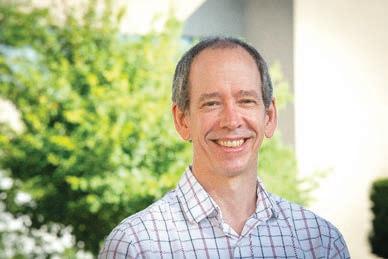 WVU Mechanical and Aerospace Engineering
WVU Mechanical and Aerospace Engineering
Space weather is a relatively unexplored phenomenon that is caused by large bursts of particles released by the sun. The unusually strong bursts result in geomagnetic storms that can cause severe problems for satellites in orbit, and in some cases, unleash problems on Earth, too.

“Space weather is an undeniable adversary to our efforts for protecting humans and humankind’s technological infrastructure, including space assets,” said Piyush Mehta, assistant professor and J. Wayne and Kathy Richards Faculty Fellow of mechanical and aerospace engineering in WVU’s Statler College. “Space weather impacts everything from power delivery and grid security, to communications, satellite operations and collision avoidance, spacecraft damage, radiation exposure for astronauts and more.”
The team has been awarded $2.4 million over four years from the National Science Foundation in collaboration with colleagues from University of Texas at Arlington, the Bay Area Environmental Research Institute, and the Electric Power Research Institute under the Grand Challenges in Integrative Geospace Sciences: Advancing National Space Weather Expertise and Research toward Societal Resilience (ANSWERS) program. The project includes co-principal investigators Oleg D. Jefimenko Professor of Physics and Astronomy Earl Scime, Associate Professor Weichao Tu, Research Assistant Professor Christopher Fowler, Professor Paul Cassak from the Department of Physics and Astronomy and Professor Snehalata Huzurbazar from the Department of Mathematics, Statistics and Data Science at WVU.
The project will encompass a first-of-its-kind experimental investigation to understand how plasma — the most abundant state of matter in our solar system — interacts with elements in the atmosphere around the sun and Earth.
Scime will lead the laboratory investigation aspect of the project in the Center for KINetic Experimental, Theoretical, and Integrated
WRITTEN BY OLIVIA MILLERComputational Plasma Physics in WVU’s Eberly College. The KINETIC Center, funded by NASA, NSF and the Department of Energy, is the only facility in the world capable of making three-dimensional measurements of the motion of positively charged ions and electrons at small scales.
According to Scime, the big challenge will be to measure how readily particles in the plasma undergo collisions by shooting a beam of electrons through the plasma and measuring how often they collide to reproduce different layers of the Earth’s ionosphere or the solar atmosphere.
“The award addresses a very acute need in the space weather community for gaining a better understanding of how charged particles and neutral particles in a plasma interact in various environments within the solar system,” Mehta said. “Space weather models presently either ignore the effects of plasma-neutral interactions or rely on dated models and data that have been obtained from simple experiments. We are going to update the information that exists historically, after decades, using a novel experimental investigation.”
Mehta, principal investigator of the project, will serve as the project’s coordinator and will lead the efforts for identifying the conditions for which the simulations will be performed, otherwise known as design of experiments, and the development of contemporary collision frequency models that will be folded into state-of-the-art space weather models.
Mehta is also an investigator on a second $900,000 ANSWERS project led by Rutgers University that aims to improve our understanding and predictions of several linked space weather components: geoeffective solar eruptions, global magnetic response of Earth to these eruptions, as well as variation of neutral density in the Earth’s thermosphere and its effect on satellite drag.
take
pioneering
A cross-disciplinary team of researchers from West Virginia University are undertaking a pioneering project in space weather research to improve modeling and forecasting of space weather to safeguard satellites in orbit and infrastructure on Earth.
The project is also a collaborative effort between researchers from Rutgers, New Jersey Institute of Technology, Montclair State University and WVU.
“The two projects are very relevant to each other,” Mehta said. “In the project led by Rutgers, we want to see how what the sun does translates to near-Earth environment and trickles down with the energy transfer to the upper atmosphere to understand how that impacts the change in density of the atmosphere, and eventually the change in drag that ultimately impacts satellites in orbit.”
The WVU-led project also incorporates a large educational outreach element that will distribute science kits geared towards exciting and modern science topics to elementary schools in 21 West Virginia counties. The outreach effort will be led by WVU physics Professors Cassak and John Stewart in collaboration with the Spark! Imagination and Science Center in Morgantown.


“Substantial research has shown that hands-on activities are key to learning science and motivating students to select STEM careers,” Stewart said. “This equipment may not be currently available to all teachers in West Virginia. We hope the students will first develop an interest in science and a curiosity which causes them to investigate further. We hope they begin to see themselves as future scientists and engineers and begin to make the educational choices that make these exciting careers possible.”
As the kits are delivered, teachers will be provided with lesson plans. An outreach presentation will also be made to the classroom to further generates excitement about science.
“None of this would have been possible without having a team at WVU that has complementary expertise,” Mehta said. “It’s truly a multidisciplinary and multi-institution collaborative project, and by leveraging this, we are aiming to solve a problem that has been very difficult and challenging to solve.”


Researchers from WVU are on the scientific team that recently discovered a “heartbeat” like radio signal which was picked up by the Canadian Hydrogen Intensity Mapping Experiment (CHIME) radio telescope in Canada. The detection is described in the journal, Nature, published on July 13.

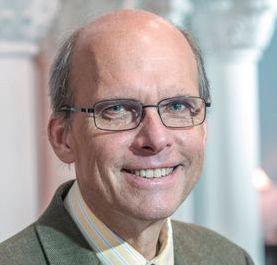

Scientists in the WVU Statler College of Engineering and Mineral Resources have developed a way for extraplanetary rovers to use nonvisual information to maneuver over treacherous terrain. This research aims to prevent losses similar to the Martian exploration rover Spirit, which ceased communications after its wheels became trapped in invisibly shifting sands
 WVU researchers are leading a first-of-its-kind laboratory investigation to increase society’s resiliency to space weather hazards. (background photo/ NASA, portraits/WVU Photo)
WVU researchers are leading a first-of-its-kind laboratory investigation to increase society’s resiliency to space weather hazards. (background photo/ NASA, portraits/WVU Photo)
WVU researchers have found that social networking platforms can serve as a direct-to-consumer marketing tool for drug dealers to sell illicit drugs.
Professor Xin Li, in the Lane Department of Computer Science and Electrical Engineering, and Chuanbo Hu, post-doctoral fellow, said that detection of online illicit drug trafficking has become critical to combat the drug trade on cyber platforms.
“Illicit drug trades have co-evolved with technology in the past decades,” Li said. “Social media has become a tool exploited by not only common people but also drug dealers.”
One popular service drug dealers have exploited is Instagram, which Li said replaced Twitter as the primary platform for illicit drug trafficking around 2019. Compared to other social media platforms, including Tik-Tok, the algorithms associated with Instagram allow more personalized content to be aimed directly at people expressing interest in certain posts and hashtags.
Anyone who follows a dealer’s account or likes a dealer’s post will prompt the Instagram algorithm to fill the person’s feed with more of those posts for drugs.
To combat this, Li, Hu and their team conducted the first systematic study on fine-grained detection of illicit drug trafficking events on Instagram. They proposed a deep multimodal multilabel learning approach to detect IDTEs and demonstrate its effectiveness on a newly-constructed dataset called multimodal IDTE.
This model takes text and image data as the input and combines multimodal information to predict multiple labels of illicit drugs. Their research was presented at an international conference in late 2021.
“The multimodal-IDTE is the designed AI model to automatically detect illicit drug trafficking on Instagram,” Hu said. “Compared with previous work, this method fully considers the drug trafficking clues provided by images and text and realizes the fine-grained classification of drug trafficking events.”
According to Li and Hu, drug dealers generally use hashtags on Instagram to extend their reach and engage their audience, which can be attached to posts. The dealers almost always link many drugrelated hashtags to improve the visibility of their posts.
Accurate detection of IDTEs from social media has become increasingly more challenging due to inconsistency of drug legislation, the vastness of social media and the ambiguity in what drugs are being posted and for what reason.
“They promote illicit drug trades in two ways: by posting a message, like an ad for a certain drug, and by replying to an existing post,” Li said. “They use slang, street names of drugs, or other ways like misspelling, to evade being caught.”
“Some drug dealer accounts never post images, but only comment on some hot posts to improve the visibility of their ads,” Hu said.
Li said detecting IDTE is like finding a needle in a haystack due to the enormous size of social media data.
“Drug dealers use various tricks to evade detection,” Li said. “The boundary between IDTE and regular events is not always clear. For example, someone’s grandmother might be using a certain opioid as the prescription drug for pain management.”
Unlike existing works on drug dealer detection or drug use detection from aggregated information, Li and Hu focus on detecting activities related to suspect IDTEs. Their work also focuses on an approach that detects not only illicit drugs, but also their specific types in each suspect IDTE.
Specifically, Li and Hu’s model takes in text and image data associated with suspect IDTEs and composites the multimodal information to predict multiple labels of an illicit drug.
“We refined the classification of IDTEs into nine categories, where most of them contain the widely used illegal drugs,” Hu said. “Taking a post with image and caption or comment as an input, the proposed model can learn the drug features based on multimodal analysis to determine if it is illicit drug related and which category it belongs to.”
The researchers have manually constructed a large-scale multimodal IDTE (MM-IDTE) dataset for the purpose of illicit drug detection. The MM-IDTE dataset, containing nearly 4,000 posts and more than 6,000 comments, represents the largest multimodal (text and image) illicit drug detection dataset to date.
To construct such a large-scale dataset, the researchers have designed an automatic data crawling system for Instagram that jointly uses hashtag and image information to guide the data collection.
Likes, shares and drug deals: WVU researchers create model that detects illicit drug trafficking on social media
Social media can be much more than political rants and snapshots of scrumptious meals or furry friends.
“Collecting Instagram data manually is an impossible task,” Li said. “My team has developed a data crawling system to automatically download all data (posted texts and images) from Instagram. It collects raw materials to support our data mining research.”
“The automatic data crawling system is designed to collect many training samples, which are very useful to help the model automatically learn discriminative representations for classification,” Hu said. “In other words, the larger and more diverse the data is, the more accurate and robust the model will be.
“This data crawling system automatically retrieves drug dealer posts based on the collected drug-related hashtags,” Hu said. “To improve retrieval efficiency, the system automatically filters out some irrelevant posts through the AI model.”
The newly-constructed MM-IDTE dataset will be made publicly available to support the research related to illicit drug trafficking activities.
Li and Hu propose a deep multimodal and multilabel learning (DMML) framework to detect illicit drug trafficking events because it can realize fine-grained classification of IDTEs considering drug legalization differences.
“The proposed method can automatically learn discriminative features from multi-model data, and it can detect different drug trafficking patterns based on the proposed comment-based detection unit,” Hu said.
Li and Hu said that their method can successfully identify some challenging cases difficult for untrained eyes, such as special symbols and style changes attempting to evade detection. The developed system could also facilitate the disruption of illicit drug trade by law enforcement.
Li and Hu believe that their research can help identify different types of drug trafficking events on social media platforms.
“Our approach is not limited to Instagram,” Hu said. “It is a general tool to detect illicit drug trafficking events by fusing multimodal data, such as images and text. The reason for this design is to flexibly expand to other platforms.”
“Further extensions into human, natural resources and virtual products trafficking are possible,” Li said.
Minglei Yin, Lane Department of Computer Science and Electrical Engineering doctoral student, joined Li and Hu on the study.
A new data-driven mechanistic approach developed by Professor David Klinke that predicts cell types within tissue will help to reduce drug costs and treat diseases that were difficult to develop drugs for.

A member of the United States military is separated from their group, leaving them lost in an unsafe battlespace. To stay hidden from enemies, they use a smart handheld device that connects to a team of drones that locates missing personnel without using GPS signals – allowing them to be quickly and safely located.

WVU engineers are partnering with Kinnami Software Corporation to advance search and rescue operations to pinpoint isolated personnel without using radio GPS that an enemy can easily intercept.

 WVU Statler College of Engineering and Mineral Resources
Like Comment Share
WVU Statler College of Engineering and Mineral Resources
WVU Statler College of Engineering and Mineral Resources
Like Comment Share
WVU Statler College of Engineering and Mineral Resources
Blurry, low-resolution images from security cameras or drones can throw hurdles at the efforts of law enforcement and military.
This is where one West Virginia University engineer hopes to paint a clearer picture by developing robust face recognition software algorithms capable of accurately identifying individuals at distances as far as 300 meters, or nearly 1,000 feet.
Nasser Nasrabadi, professor in the Lane Department of Computer Science and Electrical Engineering, will receive nearly $1.1 million in funding for research that could improve counterterrorism, protection of critical infrastructure and transportation facilities, military force protection and border security.

The biometrics algorithms developed by Nasrabadi’s team will create more reliable systems with high-matching accuracy from long ranges and in extreme and challenging conditions.
“Face recognition performance is severely impacted by distance, the individual’s pose, the lack of adequate resolution; all those things weigh heavily on how well facial recognition systems have been able to correctly identify people,” Nasrabadi said. “The novel biometrics algorithms that will be developed are using a new deep learningbased technology that will provide robust face recognition algorithms that can handle challenging conditions present in real world operational scenarios.”
Nasrabadi will use publicly available biometric datasets and data provided by Intelligence Advanced Research Projects Activity, consisting of still images and videos of a person’s face, gait and body shape. This data will help improve the accuracy of the algorithm’s ability to identify an individual’s face from lowresolution, poor illumination and lowquality images, like those captured from security cameras or drones.
IARPA is funding the multi-year research effort called the Biometric Recognition and Identification at Altitude and Range program, which spans government agencies, contractors and multiple universities. The algorithms developed by WVU will contribute towards IARPA’s mission of solving problems that have the potential to provide the nation with an overwhelming intelligence advantage.
“The algorithms are going to be based on image super-resolution, deblurring, facial pose estimation and correction, extracting whole-body biometrics signature, and developing end-to-end face recognition under severe imaging conditions,” Nasrabadi said. “Our goal is to push the face recognition research forward and build biometric technologies that are significantly ahead of the current state-of-the-art.”
Five to six PhD students at the Statler College of Engineering will gain realworld experience through this research project by developing AI/machine learning biometrics algorithms and testing them on unstructured data in the wild.
“Our PhD students will oversee the development of the biometrics algorithms and end-to-end systems,” Nasrabadi said. “They will write the software and develop new and novel approaches to solve the face recognition problem using new artificial intelligence/machine learning tools. They will develop sophisticated deep neural networks architectures trying to mimic the human nervous system and gain valuable experience in AI/ ML technology. They will be trained to become deep learning experts who are heavily in demand in the commercial and Department of Defense world.”
For this project, WVU will collaborate with the University of Central Florida, State University of New York at Buffalo, University of California-Riverside, University of Texas at El Paso and University of California-Merced.
This research is based upon work supported in part by the Office of the Director of National Intelligence (ODNI) and IARPA, via [2022-21102100005].





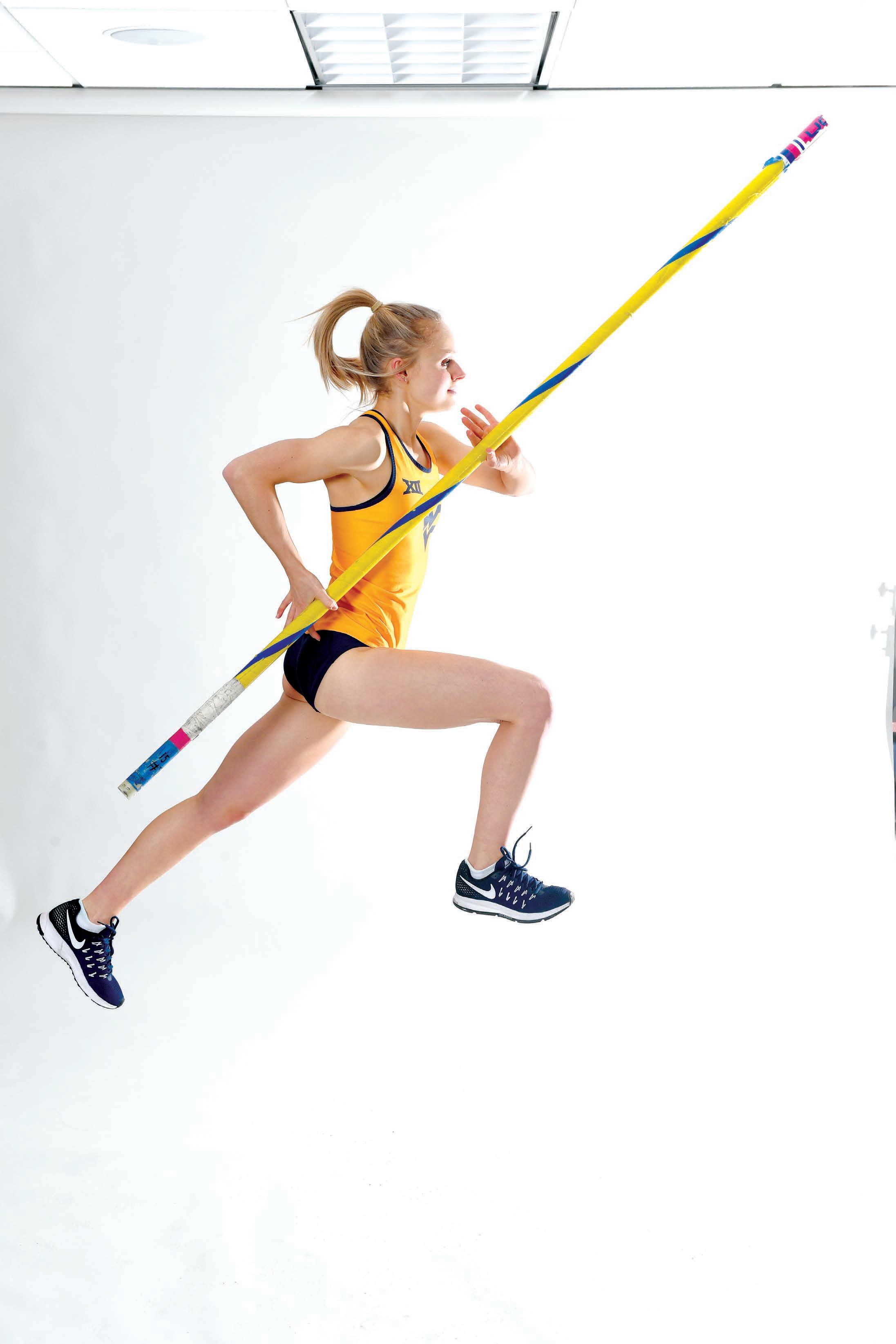
It’s 5 a.m. and while many other students are still sleeping, studentathletes are on the track, in the gym or on the field — maximizing the mechanics of their bodies to outperform their opponents. During practice their thoughts range from how they need to adjust their body while running so wind resistance doesn’t slow them down to how their body is functioning like gears to make them run, jump and react as quickly as possible.
Not many outside college athletics understand what it takes to be a student-athlete — from the time commitments, travel and the management skills needed to balance competition and academic demands, student-athletes have trained for years to handle this level of responsibilities.
Hundreds of students at West Virginia University thrive under pressure by being a part of WVU Athletics. Student-athletes who pursue careers in engineering must balance their rigorous athletic and academic schedules to succeed in engineering and sports, and they have found that engineering has helped them perform better in their sport.
Four collegiate student-athletes majoring in engineering at the Statler College of Engineering and Mineral Resources share their stories of personal triumphs, hardships and how they
 WRITTEN BY ADRIANNE UPHOLD PHOTOGRAPHY PROVIDED BY WVU ATHLETICS
WRITTEN BY ADRIANNE UPHOLD PHOTOGRAPHY PROVIDED BY WVU ATHLETICS
When Zara Zervos was born, her parents — Ted and Shawna Zervos — bought a running stroller. Her father started running with Zervos in the stroller when she was only three days old.
“That was how my whole life was like growing up, going on runs with my parents,” Zervos said. “Once I was old enough to start running with them, that became a big part of our family bonding; we go out in the mornings and run together, and we always did that together as a family.”
Staying active has played a significant part in her family and life routine. Zervos has always been an athlete — she started playing soccer before she could remember, and she began competing in the sixth grade in the sport that would take her to collegiate athletics at WVU.
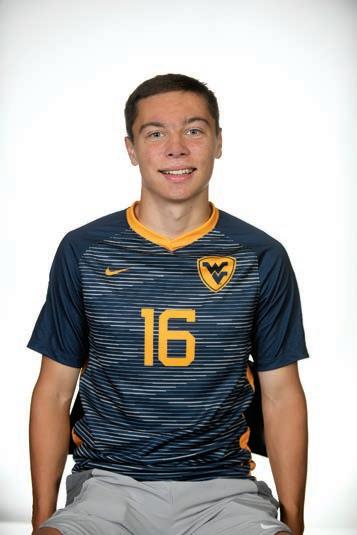

Zervos attended John Marshall High School in Moundsville, WV, where she held the position of cross-country captain. She quickly became a star in her high school track career — holding records for the 800-meter and




1600-meter races at John Marshall. She ran for the cross-country team in the All-Ohio Valley Athletic Conference in 2017, 2018 and 2019. She also finished ninth in the All-State Cross Country meet in 2018 and 10th in 2020.
As Zervos finished high school, she saw the potential within herself to take this love of running and competitiveness to the next level at WVU. But it wasn’t just the adrenaline from running that attracted Zervos to cross country and track — being able to compete as a team while being ranked as an individual allowed her to have the team bonding and support she desired while pushing herself individually.

“You get a score as a team, you get a place as a team and you’re going to meet as a team,” Zervos said. “But ultimately, it’s just you against your time from the past. So, I liked the idea that I could be part of a team and we could support one another, but then no matter how good or bad the team is, I can still represent myself by beating my last time.”
For Zervos, picking mechanical and aerospace engineering as her major came naturally because of the exposure she had in middle school at an engineering challenge camp offered by Statler College. The camp introduced young middle school girls like Zervos to engineering careers, which made her realize she could take her passion for math and apply it to any job in engineering. The variety of engineering programs offered at the Statler College also piqued Zervos’s interest. The possibility of earning a dual degree in mechanical and aerospace engineering encouraged her to explore both programs.
“Aerospace is the perfect opportunity for me to be able to design equipment that would help humans travel and explore space more, like designing rovers and rockets,” Zervos said.
Balancing her academic and athletic schedule is not an easy task. Still, she attributes the time management skills she’s developed over the years to sticking to a schedule that allows her enough time to study during the week while also being able to split up her training in between classes. The cross country and track team typically meet on Tuesday mornings to exercise together, and then Zervos’s training for the rest of the week is dependent on her schedule.
“On Mondays, Wednesdays, Thursdays and Fridays, I find a time that fits well into my schedule to do my hour-long run,” Zervos said. “I like how our training is set up because it allows me to split up my day. If I’m working on homework or studying and need a break, I can go on my run, and it clears my mind, so I feel refreshed when I’m back working.”
Zervos also attributes balancing cross country and track to the persistence and discipline skills she’s developed from her engineering courses.
“Persistence and discipline are a big part of engineering that keeps me focused,” Zervos said. “A big part of engineering is if you make a design and it doesn’t work, you have to go back in to see what you did wrong, fix it and be willing to keep going to make something work. That’s exactly how I treat my meets; I have to be willing to fix what went wrong.
“You need persistence and discipline to succeed in cross country, too. Even if I have a bad race one day, I have to be willing to see what went wrong. Then, I ask myself, how can I make it better? What do I change for next time? Being persistent to not give up on engineering or my sport matters a lot to me,” she continued.
Zervos has become fascinated by the correlation between mechanical engineering and her sport through her exposure to engineering concepts in her classes. Thinking about the mechanics of her legs and how they work to make her move faster or how wind resistance can impact her performance gives Zervos a cutting-edge advantage over other players who aren’t approaching their sport like an engineer.
“When taking physics, we would talk about resistance and I would think about running on the track,” Zervos said. “On a track, you’re running into the wind, which is slowing you down, and that’s the same thing that happens to planes.”
As Zervos starts her sophomore year at WVU, she is thinking about her career outside of the Statler College and what this journey will entail for her. She hopes to design rovers or rockets in the future to assist in sending humans to space.
“i’ve thought about how there’s so much correlation between engineering and my sport, which has helped me think strategically when i’m about to race.”
Brayden Dudley is waking up for his first practice of the day at 5 a.m. with the WVU football team at Milan Puskar Center. He has a long day filled with training, class and studying, so staying to his strict schedule is imperative to his success as a defensive lineman and mechanical engineering major.
Following 6 a.m. practice with his team, Dudley heads off to the Evansdale area of campus to catch his back-to-back mechanical engineering classes. Over the years, Dudley has fine-tuned his time management skills to stick to a schedule that allows him just enough time to master his performance on and off the field. A lot of help comes from the team behind Dudley, like his academic adviser Blake, who helps him prepare his class schedules.
“It’s harder trying to balance study hall and tutoring than it is balancing classes in between practice because I have a lot of people here at WVU helping me like my academic adviser who schedules my classes for early morning, so they don’t conflict with my practice,” Dudley said. “I have multiple tutoring sessions each week, so, I carve out time for those. Balancing time with school and time to do football work like extra workouts or getting extra meals to help me gain weight has trained me to balance my time management of all the necessary things I need to do as a football player.”
Dudley’s dedication to his passions has maximized his abilities as a football player and engineer. He was a redshirted freshman, a practice of holding athletes from official competition for one season. Players still work out with the team, get conditioning and receive academic tutoring but do not begin using their eligibility until their redshirt year is over. Dudley was the WVU Defensive Scout Champion for Iowa State and the WVU Special Teams Scout Champion for Virginia Tech.

While in high school, Dudley finished his senior season with 16 tackles, including 11 solos, one sack, one tackle for loss and a quarterback hurry. He’s ranked as a three-star prospect by ESPN, Rivals and 247Sports; ranked as the No. 73 player in Georgia by ESPN, No. 95 by 247Sports and No. 98 by Rivals; and ranked as the No. 65 strong-side defensive end in the nation by 247Sports and the No. 81 defensive end by ESPN.
Now two years into his academic career at the Statler College, Dudley attributes his new critical thinking skills to his engineering classes, which he says have helped him outperform others and think strategically while on the field.
“It’s helped me for football, to be able to think on my feet and react to a very changing environment so quickly,” Dudley said.
“I’ve learned to adapt to all these different things from what I’ve learned in the engineering and STEM courses because being able to think about things more strategically, while not losing focus, is really what engineers do.”
“I always think about staying two steps ahead of the other team. If I know what the team is about to bring on me, then I can go about it a different way. If I know their course of action, I can read it a little bit better to where I’m able to react to different scenarios that might happen on the field. Having an engineering thought process has helped me think strategically on the field,” he continued.
Dudley has also learned how to handle challenging situations through engineering by being more organized, consistent and intentional in his work.
“Engineering has set me up to organize myself a lot better. If there’s any form of clutter going on in my school or personal life, it’s really hard to maintain the proper schedule I need,” Dudley said. “You need a lot of discipline to do well in football and engineering and to handle both programs. If you’re disciplined in every single workout or class and every single project, it becomes easier to handle your workload.”

In the future, Dudley has dreams of pursuing a career in the National Football League, or potentially starting his own engineering consulting company that focuses on improving the efficiency and processes of other companies.

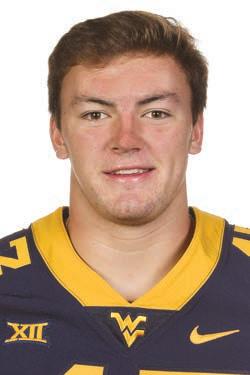

“having an engineering thought process has helped me think strategically on the field.”Deonte Malone Fundamentals of Engineering Colin Mcbee Fundamentals of Engineering
Since the time Lauren Musbach started competitive swimming at eight years old, she has written her thoughts in journals to keep her motivated and determined to achieve her goals as a member of the WVU Women’s Swim and Dive team and biomedical engineering major.
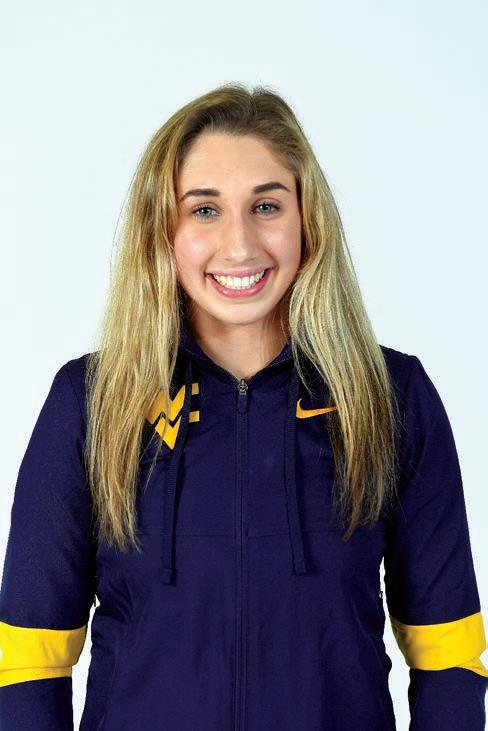
“I’m on my seventh swim journal in my life, and I will write absolutely everything in there,” Musbach said. “I write every single goal that I have for myself, I create daily goals, long-term goals, and then I will write a plan on how I’m going to proceed to achieve my goals. Writing about the goals I set for myself has motivated me to do well over the years.”
Musbach sets goals for herself in her swim journal at the beginning of each semester and the start of a season. Musbach
said her parents and her first swim coach, Rick Stacy, instilled goal-setting, confidence and determination in her while she was young to continue to set the bar high for herself. Musbach’s swim journals and family have helped her achieve goals like placing eighth overall in the 400-meter individual medley race at the Big 12 Championships, where she received a time of 4:28:23 as a freshman.
She also appeared in the B finals of the 200 fly with a time of 2:03.55, and she placed 10th at Conference Championships. While competing against Notre Dame, she finished second in the 400 individual medley (4:27.58), fifth in the 200 fly (2:03.81) and eighth in the 200 back (2:05.62). She received second place in the 200 fly, touching the wall in 2:05.23 in WVU’s season-opening meet at Pitt and also competed in the 200-medley relay (6th –1:48.75) and the 400 individual medley (4th – 4:29.48).
Musbach uses the conceptualizing skills she’s learned from the Statler College by keeping her engineering mindset on when she hits the water, focusing on improving her performance throughout the race.
“Keeping my engineering mindset while I’m competing has transformed how I perform during my sport,” Musbach said. “If I’m not feeling good with how I’m performing or if I had a weird prelim during my first race, I’m constantly thinking about how to improve that in my finals. I think to myself, ‘What can I tweak? What looked off or felt off during the race in the morning?’ Some things I especially look for are how can I recover differently and what details can I fix for the next time I’m in that race.”
She attributes the Statler College for changing how she thinks when problems arise in her race. Her courses and professors have taught her how to think about a problem from all angles, so she finds the best solution to the issue.
“The two programs combined have given me so many different life skills I wouldn’t have without experiencing both programs,” Musbach said. “Statler has helped me think about each problem thoroughly and having a problem-solving skill set will help me in my future career. Swimming has given me so much grit in life, and I know I can get through anything that frustrates me.”
The biomedical engineering major said she has always been interested in the medical field. She realized this major was meant for her because she wanted to invent products that could one day improve the way athletes feel, function and work. She decided to attend WVU because it was close to her home in Cleveland, OH, and because it was one of the only schools she was interested in that offered her major.
“I think something incredible I would like to do one day is pairing athletes with prosthetics or improving prosthetics somehow,” Musbach said. “Improving the sports industry, in general, would be exciting to me, especially because I know how important it is to be on top of your game. Also, it would be cool to help others reach their full potential.”
Musbach is interested in following her career in biomedical engineering and plans to switch career paths into medical sales eventually. Musbach encourages high school students interested in engineering and continuing a sport during college to follow their passions in both


“Don’t let the sport stop you from doing the major you want to, and don’t let the major stop you from following your passions in sports,” Musbach said. “Make sure you have a good study strategy from high school because my biggest adjustment was the amount of studying that I have to do. You can accomplish anything if you have a good study strategy coming into college.”


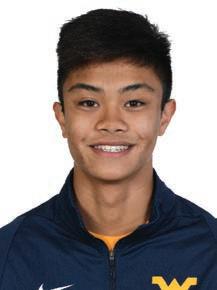

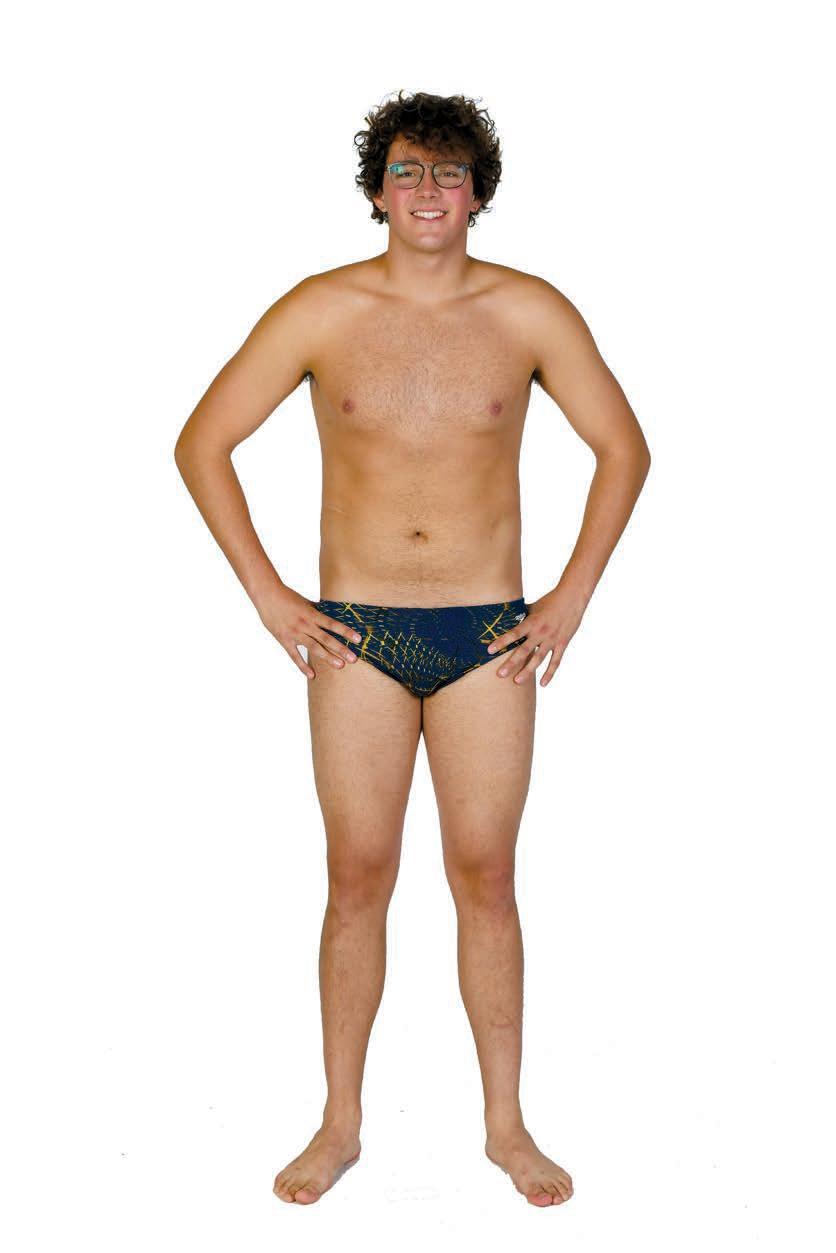
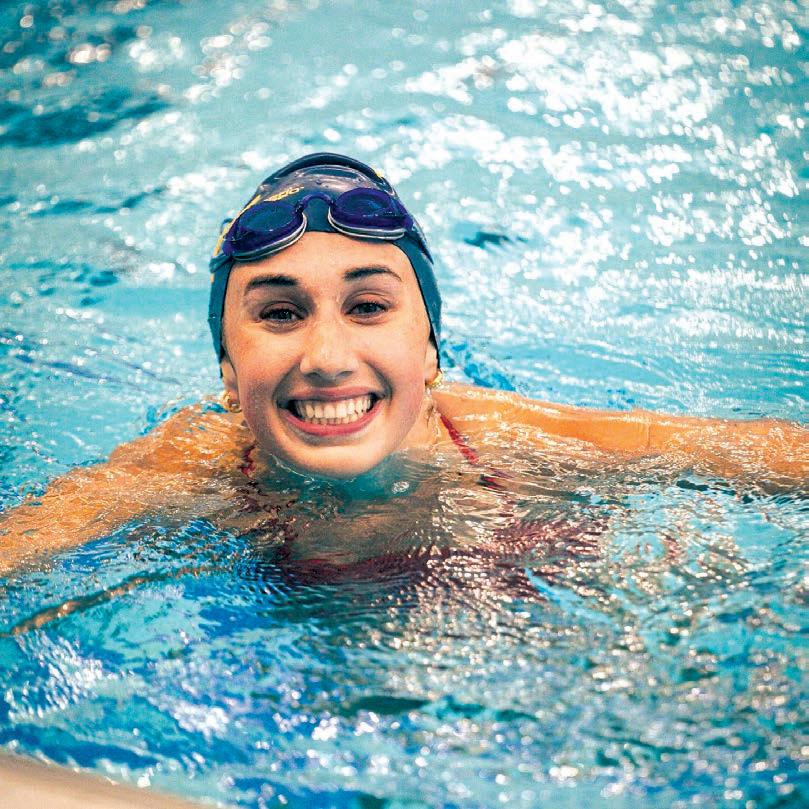
“keeping my engineering mindset while i’m competing has transformed how i perform during my sport.”MAVERICK BRAY Fundamentals of Engineering
For pole vaulter Ellie Gardner, the decision to come to WVU was rooted in family ties. Her older sister, Madelin Gardner, is also a pole vaulter, a former WVU Track and Field All-American athlete and school record holder. Both sisters graduated from Statler College with degrees in biomedical engineering and aerospace and mechanical engineering. Having an older sister invested in engineering and pole vaulting encouraged Gardner to follow in her sister’s footsteps.

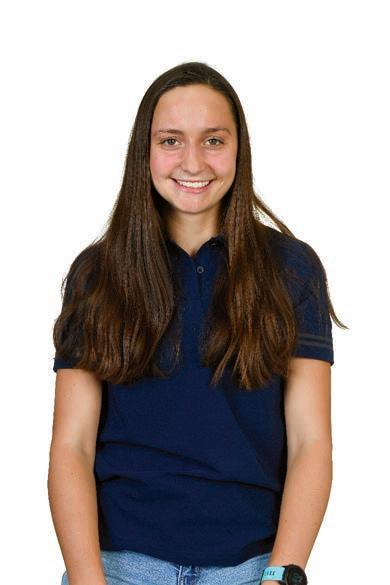
“I got into pole vaulting because my first coach knew I did gymnastics for years, and in high school he recruited my older sister and then me a few years later,” Gardner said. “I always wanted to go to WVU since I’m a native West Virginian but having my sister pole vault at WVU before me allowed me to see what it was going to be like prior to committing.”
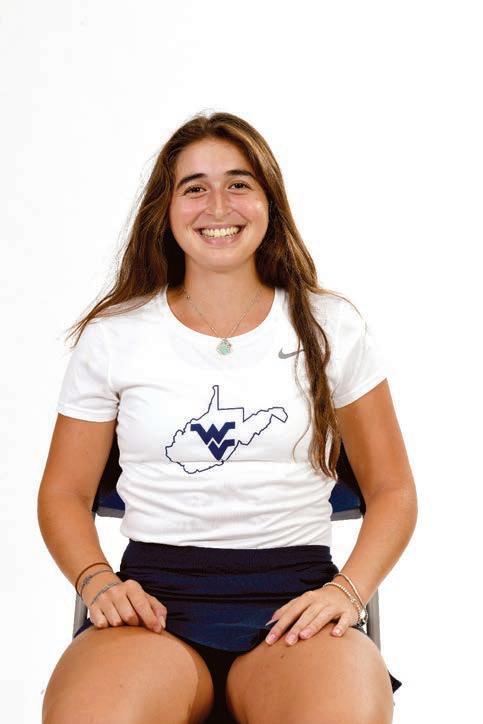
Gardner has made a name for herself in the pole-vaulting world over the last five years. In the 2020-21 season, she finished first place in the pole vault competition at the Thundering Herd Invitational with a personal and team season
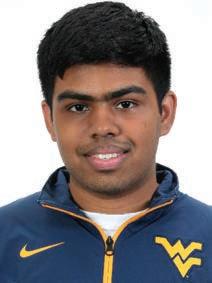
best of 3.70 meters, and she finished second place at the Marshall Classic with a height of 3.55 meters. She played on the Academic All-Big 12 First Team, placed first at the Mountaineer Classic with a height of 3.75 meters and during the 2019-20 season she finished the season ranked No. 5 in the pole vault on the all-time indoor program top-five list.
Engineering runs in the Gardner family. Her father, Jeff Gardner, is a mechanical engineer and encouraged Gardner to follow the mechanical route. She decided to enroll in the dual aerospace and mechanical program to also explore her interests in the aerospace side of engineering.
“I always knew I wanted to do engineering and being able to do a dual major and come out with two degrees within five years was a perfect opportunity and too good to pass up,” Gardner said. “I’ve loved my time here. It’s not easy. It’s tough, and it’s been a rigorous experience being here, but it’s really satisfying. Statler offers a lot of hands-on experiences, like having classes that allowed me to apply everything I’ve learned from aerospace or mechanical into a real-world situation.”
There are three aspects of Gardner’s life that she heavily focuses on: engineering, track and her social life. The key to success she’s found as an engineer and student-athlete has been maintaining a strict balance between all three important parts and recognizing when she needed breaks.
“It’s about time management and getting things done during the times that it needs to be done,” Gardner said. “Engineering
homework isn’t going to take 10 minutes — it’s going to take a few hours or a few days. You have to decide what’s important to you. Doing well in school and doing well in athletics was most important to me, so some weekends I had to spend time doing homework when my friends were doing something else, but I was determined.”
Since pole vaulting is such a technical sport, Gardner has thought about how engineering influences the way she’s able to thrust herself over the pole several feet in the air. The angles in which Gardner needs to jump up into the air and push herself over the pole remind her of the concepts she’s learned in physics and material science.


“The poles are made out of fiberglass and you’re trying to get as much power out of it as you can as you go over the bar, it’s all about angles in material science,” Gardner said. “They’ve used pole vault or high jump as examples in my physics classes to talk about how the pole vaulters skid over at the top and how your center of gravity is focused on getting over the bar. There’s a lot of engineering concepts I can think about while I’m trying to get myself over the bar.”
As an alum, Gardner looks back on her time at Statler College and in WVU athletics with fond memories with her teammates and other students in engineering projects. Following graduation in May 2022, Gardner joined the aircraft engine design and auxiliary power units company Pratt & Whitney, where she will focus on system controls, modeling and simulation.

“there’s a lot of engineering concepts i can think about while i’m trying to get myself over the bar.”

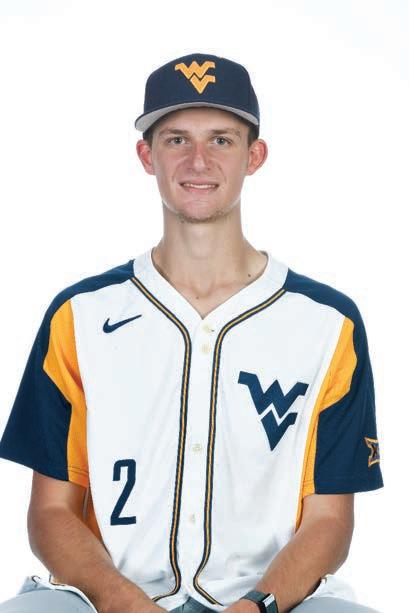












A new designation by the United States National Security Agency and Department of Homeland Security has established the cybersecurity bachelor’s degree program in the Statler College at WVU as one of the toptier programs in the nation.

Recently, the cybersecurity program in the Lane Department of Computer Science and Electrical Engineering in the Statler College has been redesignated as a National Center of Academic Excellence in Cyber Defense (CAE-CD) through academic year 2027.
“Redesignation of the cybersecurity program brings well-deserved recognition to the Lane Department, Statler College and WVU in contributing to addressing the critical shortage of professionals with cybersecurity skills,” said Anurag Srivastava, Raymond J. Lane Professor and chair of the Lane Department.
The new designation indicates that WVU’s educational and research programs are contributing to workforce development to prepare cybersecurity professionals and reduce threats to national infrastructure.
“Having our undergraduate cybersecurity program validated as a National Security Agency and Department of Homeland Security Center of Academic Excellence in Cybersecurity shows that we have a topnotch cybersecurity program here at WVU,” said David Krovich, research associate in the Lane Department. “Students coming through our program will be well equipped with the
critical knowledge and skills they need to succeed in the cybersecurity field.
The rigorous validation process required data related to the academic program of study including curriculum, faculty profiles and qualifications, maturity of the program and institutional commitments for cybersecurity-related activities to be extensively reviewed.
The bachelor’s program in cybersecurity at WVU was launched in 2018 and is now the fastest growing degree program in the Lane Department, Srivastava said.


“We will always tell students that there are almost half a million cybersecurity jobs open right now,” Srivastava said. “It’s here to stay and in fact, increase.”
WVU’s cybersecurity program allows students to learn on actual systems that mimic current real-world issues in cybersecurity. Thanks to a partnership with the Department of Defense, students in the program recently competed in Operation Locked Shield, an international cybersecurity training exercise.
The hands-on nature of the program offers an advantage in leadership and applied research an innovation while gaining cybersecurity workforce training, Srivastava added.
Thanks to a new partnership with U.S. Cyber Command’s Academic Engagement Network, a realistic cybersecurity simulation will be available in Statler College classrooms, giving students a significant leadership advantage in a rapidly growing field.
Like Comment Share
Armed with keyboards, ones and zeros, a squad of West Virginia University students were among the 2,000 participants who competed in Operation Locked Shields, an international cyber defense exercise run by NATO Cooperative Cyber Defence Centre of Excellence in Tallinn, Estonia.


Kevin Bandura, associate professor in the Lane Department of Computer Science and Electrical Engineering, is part of an international team slated to receive the Honorary 2022 Berkeley Prize for their innovative work in the field of fast radio bursts. Bandura represents the West Virginia University Center for Gravitational Waves and Cosmology alongside Emmanuel Fonseca, assistant professor of physics and astronomy. The CHIME team has been honored with the Lancelot M. Berkeley — New York Community Trust Prize for Meritorious Work in Astronomy. Bestowed annually since 2011 by the American Astronomical Society (AAS) and supported by a grant from the New York Community Trust, the Berkeley prize includes a monetary award and an invitation to give the closing plenary lecture at the AAS winter meeting, often called the Super Bowl of Astronomy.
Providing solutions to West Virginia manufacturers, fueling growth and advancing manufacturing across the state is the purpose of the West Virginia University Industrial Extension. Recent data from an independent survey of manufacturers revealed the organization received a perfect score on a customer impact survey, spotlighting the true impact WVUIE has on the state.
WVU


Congratulations to Nagasree Garapati, Michelle Poland, and Susie Huggins, recipients of the 2022 Thriving Women Program grants. We can’t wait to watch you and our community thrive!
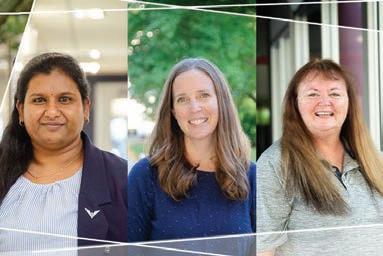
Two Statler College faculty members have been selected along with five WVU faculty by the Office of the Provost as the recipients of the 2022-24 Innovation, Design and Entrepreneurship Applied Faculty Fellowship, a multidisciplinary initiative to bolster WVU’s culture of
The IDEA Fellows will infuse entrepreneurial ideas in their coursework for the coming academic year. In addition, as a cohort, they will work to champion entrepreneurship and innovation across the University over the next

Like Comment Share
The 2022-2024 IDEA Faculty Fellows from the , assistant professor of industrial and management systems engineering
Brian Woerner, professor of computer science and electrical engineering

Following a two-year hiatus, the annual ASCE Virginia’s Conference was back in action this year and Statler College teams placed first in the Concrete Bowling Ball competition and second in

Following four years devoted to redesigning the 2019 Chevrolet Blazer into an energy-efficient hybrid vehicle, the WVU EcoCAR team placed sixth overall in Year Four of the EcoCAR Mobility Challenge competition, bringing home $14,500 in awards.
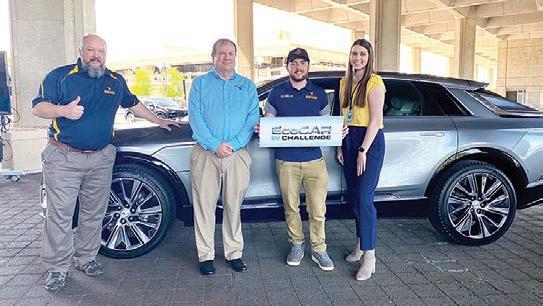
Sponsored by the U.S. Department of Energy, General Motors and MathWorks, EcoCAR is a collegiate automotive engineering competition that tasked 11 universities across North America to redesign the 2019 Chevrolet Blazer to show how they implement their designs, energy-efficient technologies, car-sharing capabilities and communication strategies. The EcoCAR team is a collaborative cross-disciplinary project from the Statler College of Engineering and Mineral Resources, Reed College of Media and John Chambers College of Business and Economics.
Mustafa Can Suner, a graduate student in mining engineering, received the 2022 Master of Science Thesis Award at the American Rock Mechanics Association conference last month. Suner’s thesis is titled “The Effect of Natural Fractures on the Mechanical Behavior of Limestone Pillars: A Synthetic Rock Mass Approach Application.”
According to the American Rock Mechanics Association’s website, ARMA serves its members and the public as the recognized representative of multidisciplinary advancements and applications in rock mechanics. ARMA recognizes outstanding contributions in rock mechanics and rock engineering through six annual awards.
The EcoCAR team brought home first place awards in Drive Quality and the CAV Perception Systems and ACC Drive Quality Evaluation. The team also placed second in the overall Communications Program. Along with the team awards, Andrew Nix, associate professor in the Depar tment of Mechanical and Aerospace Engineering and lead faculty adviser for EcoCAR, received the National Science Foundation (NSF) Outstanding Faculty Advisor Award for his excellence in transforming the frontiers of science and engineering through research and education for his students.

The WVU EcoCAR team has been selected to participate in a new four-year competition that will test students’ ability to engineer a next-generation battery electric vehicle for the 2023 Cadillac LYRIQ. WVU is among 15 universities selected to engineer vehicle-to-everything connectivity that will implement energy efficient and customer-appealing features in the new vehicle.
The new competition starting in fall 2022 will challenge the WVU team to apply innovative solutions to address equity and electrification challenges in the future of mobility and implement advanced powertrain, charging and thermal systems to use grid electricity intelligently.
A Statler College student known for his previous video game development work has been selected to create a game for the renowned anthology series


“Dread X Collection 5.”
Conner Rush, a junior computer science student in the Statler College, is the founder of FYRE Games, an independent video game development studio that has published games including Into the Unknown, Welcome to the Dreamscape and Summerland
In his most recent project, the video game publishing company Dread XP selected Rush to create a game for the renowned anthology series. This series is a collection of bite-sized experiences centered around a single theme: horror. Some of the world’s most promising small video game developers are asked to develop one game in the collection.

“Every few months or so they’ll release a new collection, and each collection ranges from eight to 12 video games developed by different creators,” Rush said. “Every Dread X collection has a theme and a strict time limit, and they pick who they feel are the best upcoming developers around the world. This year the collection was centered around entertainment, and we were given two months to make a game that falls into that theme.”
Rush’s game, We Never Left, takes viewers through a mystery staged in 1983. The player gets a call from an unfamiliar person saying a cousin you haven’t spoken to in a long time has gone missing. The game is centered around the player going to the cousin’s house and investigating.
“It is a first-person, pixelated aesthetic game that combines firstperson exploration and classic text adventure gameplay,” Rush said. “This game is made for horror fans, and there are many things in this game that are homages to old horror. Aesthetically, I feel like I take a lot from ‘Texas Chainsaw Massacre,’ the original ‘79 movie, and ‘Halloween’ were big inspirations.”
The collection of video games from all creators is stitched together into one main game. Players must solve puzzles and other challenges to unlock each game created by the developers. This allows the players to access each developer’s game from the main game seamlessly.
“The entire story is slowly fed to you while you uncover secrets,” Rush said. “Upon entering your cousin’s house, the only thing that seems out of place is a text adventure game loaded up on a computer. The player must play the text adventure game, which ends up being a little bit more than what meets the eye.”
Rush has collaborated with a local Morgantown music group called Stereophonic to create the game’s theme music. He also invited YouTuber Garrett Watts to narrate one of the introductory characters and voice actor Jonah Scott, who starred in several video games and animated series, including Dying Light 2, Attack on Titan and Beastars.
In past games Rush has created, he heavily focused on what the players would take away from the video game. In his game Summerland, he wanted players to question their mortality. Rush said We Never Left was created to be a stand-alone popcorn flick.
“All of my past games have been very psychological, very meaningful, and I think recently, for the first time, I created something closer to a popcorn flick where you sit down, play the game and you have a good time to the point where you almost forget what’s happening in the outside world,” Rush said. “It’s like a popcorn horror movie where you put it on, and you just enjoy it.”
This is the first time Rush has collaborated on a project this large, and he says working in engineering groups during his classes at Statler College helped him manage this project.
“The social aspect of engineering helped a ton, and this is the first time I’ve interacted with multiple developers and dealt with the publishing company,” Rush said. “A lot of working in teams and engineering groups and presentations allowed me to round out my skills to communicate properly and meet deadlines with the Dread XP group.”
The game We Never Left is now available to play on Steam.
WVU computer science student selected by video game publishing company
develop game for well-known horror seriesRUSH PHOTO SUBMITTED
Harnessing creativity and determination while classrooms and extracurricular activities were upended by the pandemic, the newest cohort of Bucklew Scholars has forged new paths to begin a journey at WVU focused on discovery and finding creative solutions to the issues that have commanded the attention of its generation.
The Bucklew Scholarship is given to 20 high-achieving West Virginia students accepted to the University and qualifies them to be considered for the Foundation Scholarship, WVU’s highest academic scholarship.
Rebecca Cox, Fairmont Senior High School (Mechanical Engineering and Biomedical Engineering major)
Reese Allen, Bridgeport High School (Mechanical Engineering major)
Matthew Olivero, Hurricane High School (Mechanical and Aerospace Engineering major)
Carter Leadmon Hurricane High School (Computer Science and Computer Engineering major)
Zachary Taylor, Roane County High School (Electrical and Computer Engineering major)
Luke Graham, George Washington High School (Computer Science and Computer Engineering major); Bucklew Scholar and one of the five rising freshmen selected as a prestigious Foundation Scholar.

Syd Peng, Charles E. Lawall Chair Emeritus of mining engineering at WVU, is slated to be inducted into the Class of 2022 National Mining Hall of Fame on Oct. 29. Selected by the National Mining Hall of Fame’s Board of Governors, the inductees are honored for trailblazing a commitment to sustainability concepts, leading the mineral royalty business, building the academic mining program, innovations in coal mine ground control and longwall mining and advocating for a strong domestic mining industry to supply the nation’s needs for critical materials.
Pedro Mago, Glen H. Hiner Dean of the Statler College of Engineering and Mineral Resources at WVU, announced the winners of the College’s outstanding teaching, advising, research and staff awards for the 20212022 academic year on April 1, 2022.
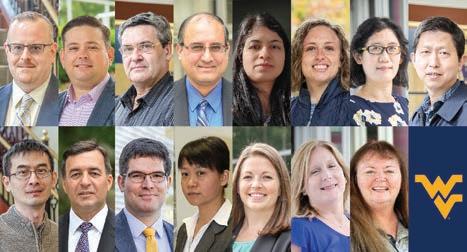
Jeremy Dawson, associate professor in the Lane Department of Computer Science and Electrical Engineering, was named the College’s Educator of the Year. Also recognized as Outstanding Educators were Christopher Griffin and Mario Perhinschi from the Department of Mechanical and Aerospace Engineering, Udaya Halabe from the Wadsworth Department of Civil and Environmental Engineering, and Sarika Solanki of computer science and electrical engineering.
Lauren Stein, senior academic advisor, and Xinyu Zhang, teaching assistant professor and academic advisor of fundamentals of engineering, were named the College’s Advisor/Mentor of the Year.
Yu Gu, associate professor of mechanical and aerospace engineering, was named the College’s Researcher of the Year. Also recognized as Outstanding Researchers of the Year/Senior were Xin Li and Nasser Nasrabadi of computer science and electrical engineering, Thorsten Wuest of industrial and management systems engineering and Xueyan Song of mechanical and aerospace engineering. Emily Garner of civil and environmental engineering was recognized as Outstanding Researcher of the Year/Junior.
This year the Statler College included staff recognition awards. Kathleen Cullen, pre-award research administrator, received the Peer Recognition Award, and Susie Huggins, administrative assistant of fundamentals of engineering, was recognized with the Exemplary WVU Values Award.


Order of August recipients have distinguished themselves not only by their outstanding academic performance, but also their steadfast dedication to research, efforts to narrow the achievement gap for underrepresented students in their home state and to advance social justice in their communities and beyond.

Savannah Hays from Mineral Wells will graduate with a degree in biomedical engineering. She has served as a teaching assistant for the Statler College, a STEM tutor for the TestWELL Learning Center and the vice president of the WVU Society of Women Engineers.
Remaining WVU Outstanding Seniors in Statler College
; North Canton, Ohio (Honors College, Statler College/IMSE/MAE)
; Morgantown (Honors College, Statler College/CBE)
; Perrysburg, Ohio (Statler College/MAE)
; Perrysburg, Ohio (Honors College, Statler College/MAE)
; Morgantown (Honors College, Statler College/CBE)
; Wheeling (Honors College, CBE)
Derek Hockenberry; Coplay, Pennsylvania (Honors College, LCSEE)
Ali Rai; Morgantown (Honors College, Statler College/CBE)
Kirsten Roys; Timonium, MD (Honors College, Statler College/WCEE)
Brook Woldegabriel; Addis Ababa, Ethiopia (Honors College, Statler College/WCEE)
The following people have officially retired from the Statler College effective August 31, 2022. We thank them for their years of service.
ADMINISTRATION
Susie Martin, Office of Academics and Student Performance
WADSWORTH DEPARTMENT OF CIVIL AND ENVIRONMENTAL ENGINEERING
Hema Siriwardane, Chair and Professor
AND AEROSPACE ENGINEERING
Jacky Prucz, Chair and Professor Emeritus
Samir Shoukry, Professor Emeritus
An engineering student was named a finalist in the Collegiate Business Plan Competition and awarded $5,000 for his small business DashPlain.
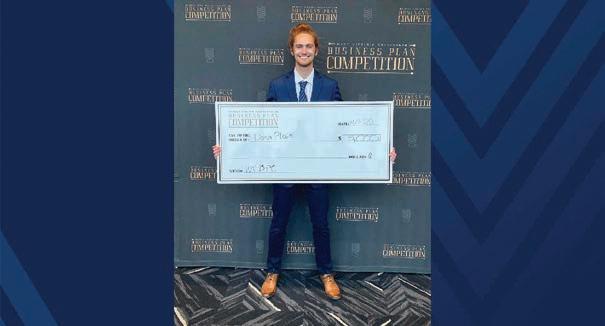
Robert Gianniny
engineering major from Harpers Ferry, WV, started his entrepreneur journey in October 2021 following his firsthand experience seeing how challenging team projects can be during his first year as an engineering student.
His small business DashPlain aims to make team projects easier by using a web-based project management application designed specifically with students in mind. DashPlain provides students with simple yet effective tools to collaborate, organize and deliver highquality team projects with focus.
“Looking ahead, I hope to see improved retention and career placement statistics, showing that students are continuing with their dreams and building upon early success,” Gianniny said.
... honor and recognition, if you are one of the named recipients of an endowed fellowship, professorship, chair or director position in the Statler College.
department and hold a common belief that we can achieve even greater heights is what makes the opportunity to take on this challenging position so meaningful to me.”
in the Statler College, has been named a 2022 Fellow Member of the American Society for Engineering Education (ASEE). Hensel was recognized at an award ceremony at the 2022 Annual ASEE Conference in Minneapolis, MN, on June 29.
Founded in 1893, ASEE is a nonprofit organization of individuals and institutions committed to furthering education in engineering and engineering technology. ASEE advances innovation, excellence and access at all levels of education for the engineering professions.
Jason Gross, associate professor of mechanical and aerospace engineering, has been named chair of the Department of Mechanical and Aerospace Engineering. Gross had been serving as interim chair of the department since January 2022. During this time, he helped the department prioritize the allocation of its available resources, as well as the development of a comprehensive plan to upgrade the department’s teaching lab facilities.
“Everyone I have interacted with as interim chair, including faculty, staff, students, alumni, and members of our visiting committee, have been so supportive,” said Gross. “The chance to continue interacting with different constituents that are united with pride in our
Since joining WVU as a professor in 2014, Gross has received many accolades and awards, including the Statler College Outstanding Researcher Senior Level Award in 2021, the Mechanical and Aerospace Academies of Distinguished Alumni Outstanding Teacher Award in 2019, the Statler College Outstanding Teacher Award in 2017, and the Statler College New Researcher of the Year Award in 2016. He has also been the principal investigator
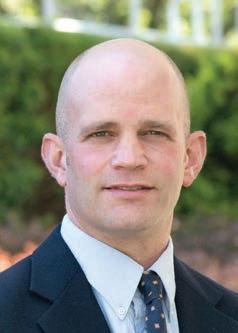

The society limits the number of Fellow Members in one year to a total equal to one-tenth of one percent of the ASEE individual membership. The nominees are evaluated by the Fellow Member Committee and appointed by the ASEE president.
“I am deeply humbled and honored to be selected as an ASEE Fellow,” Hensel said. “I have learned so much from networking, serving and collaborating with my ASEE colleagues worldwide who share my passion for engineering, technology and all STEM education.”
Hensel has served as PI and Co-PI on several Engineering Education-related NSF Grants, served as a reviewer for NSF panels, and continues to pursue funded research activities. Her current research interests focus on student transition to college, academic success, retention and persistence, as well as related issues of diversity, equity and inclusivity within STEM fields and especially in engineering.
Robin Hissam, teaching associate professor in the Statler College, has been appointed to associate dean of academics and student performance.

In this role, Hissam will enhance students’ learning experiences within the College. She will work alongside student services, outreach and recruitment, corporate relations and career assistance to guide students through the academic, extracurricular and procedural aspects of their college career to ultimately work in the fields of engineering or computer science.
“I am extremely grateful to Dean Mago for the opportunity to lead this team that is focused on our students and their academic careers,” Hissam said.
Hissam has a wide range of experience in engineering focusing on biomaterials and materials science. Since joining West Virginia University, Hissam has demonstrated high-quality work and excellence for students by serving as the director of undergraduate education since her appointment in 2019.
Her passion for education has been recognized Collegewide by being named one of the College’s Teachers of the Year in 20182019 and the College’s Adviser/ Mentor of the Year in 2020-2021.
For the last five years, Hissam has been a member of the Faculty Senate Curriculum Committee and served as chair during the 2021-2022 academic year. She has been a member of the Statler Undergraduate Curriculum Committee for seven years and served as the chair for three years. She is also a member of the Statler Academic Standards
the past year in my role as the interim department chair.”
Since joining WVU in 2009, Nimbarte has worked on multiple research projects with a total funding of over $10 million as PI and Co-PI. Nimbarte also serves as the graduate program coordinator of the industrial engineering program and assistant director of the Department of Energy funded Industrial Assessment Center since 2015.
Nimbarte received the Statler College’s Educator of the Year award in 2021 and the Outstanding Teacher award in 2014 for his commitment to achieving and maintaining excellence in both teaching and mentoring at the College. He also received Statler College’s Outstanding Researcher award in 2020. Nimbarte serves on the editorial boards of four top-tier
Ashish Nimbarte, professor of industrial engineering, has been named chair of the Industrial and Management Systems Engineering Department.
Nimbarte stepped into the role as interim chair of the department in August 2021 prior to this permanent appointment. Over the past year, he has worked on improving the visibility of industrial engineering capstone projects to a broader audience and developed a fully online master’s degree program in engineering management.
“I am truly honored to take on the responsibility of the chair of Industrial and Management Systems Engineering Department,” Nimbarte said. “I want to express my sincere gratitude for the support that I received from faculty and staff, students, alumni and especially Dean Mago over
partners, and to enhance services provided to students enrolled in the program. She aims to provide first-year engineering students with the skills necessary to succeed in engineering.
“I am extremely grateful to Dr. Pedro Mago for the opportunity to lead the fundamentals of engineering program that is focused on transitioning students, helping them find a home in engineering, and supporting their academic success,” Santiago said.
Santiago has been a dedicated faculty member at the Statler College since 2009. She promotes passion for learning and engineering by teaching first-year engineering courses and serving as an academic adviser to at least 125 students each semester.

Her excellence in teaching and academic advising have been recognized at both the College and University level, as she has received the 2017 Statler College Outstanding Teaching Award, 2020 Statler College Educator of the Year Award, 2021 Statler College Outstanding Teaching Award and the 2017 WVU Foundation Outstanding Teaching Award. She has received two National Science Foundation grants in engineering education.
P.V. Vijay, associate professor in the Wadsworth Department of Civil and Environmental Engineering, has been named a Structural Engineering Institute (SEI) Fellow.


Vijay was selected for being a driving force behind the practical application of cuttingedge research, accelerating technological advancements and improving the professional practice of structural engineering.
professor in the fundamentals of engineering program, has been named director of the program.
In this new capacity, Santiago will lead the program to expand the exposure of students to different engineering majors and industry
Since 2013, she has served as an active academic adviser for the WVU student chapter of the Society of Hispanic Professional Engineers, while guiding the organization in their campus activities and has supported student participation in annual SHPE conferences. In 2021, she was recognized nationally by the organization and was named the Chapter Advisor of the Year by the SHPE through their Technical Achievement and Recognition award program.
“It is an honor and privilege to be recognized as the 2022 SEI Fellow,” Vijay said. “This recognition will showcase my expertise and professional contributions on providing innovative solutions to the complex infrastructure problems with the use of advanced and modern materials including the enhancement of structural materials in traditional materials such as concrete and steel.”
Vijay has served as a PI and Co-PI in various research projects related to the design, development, field implementation, rehabilitation, durability and monitoring of civil engineering infrastructure. He has integrated interdisciplinary research work on fiber reinforced polymer materials, which has led to advanced course offerings and training of Statler College students, textbook development and professional courses – adding a new dimension to the practice of structural engineering.
INDUCTED 2021
INDUSTRIAL AND MANAGEMENT SYSTEMS ENGINEERING
Jeff Manual, WVU, BSIE-1992 | Strategic Service and Warranty Executive
Laura Robertson, WVU, BSIE-1993, MBA-2003
Director of Inventory Logistics at McJunkin Red Man Corporation WVU
INDUCTED 2022
CHEMICAL AND BIOMEDICAL ENGINEERING
Laurie Wiegand-Jackson, WVU, BSChE- 1984
President and Founder of Utility Advantage
Richard Turton | Honorary Inductee
Nottingham University in England, BSc in Chemical Engineering-1977
Oregon State University, Chemical Engineering MS-1979, PhD-1986
Retired chair and professor emeritus, chemical and biomedical engineering department
LANE DEPARTMENT OF COMPUTER SCIENCE AND ELECTRICAL ENGINEERING
Richard Folio, WVU, BSEE
National Defense University’s Eisenhower School, Master of Science Degree in National Resource Strategy
University of Virginia’s Darden School, Leadership Certificate
Chief Architect within the Engineering and Technology Strategy Office of the Space & Airborne Systems Segment of L3Harris Technologies Inc.
Peter Hill, WVU, BSEE-1983, MSEE-1985, PhD Electrical Engineering-1988
Principal Scientist, Respironics, Pittsburgh, PA
MECHANICAL AND AEROSPACE ENGINEERING
David R. Gingras, WVU, BSAE-1991
George Washington University, MSAE-1994
President, Bihrle Applied Research
F. Adam Korona, WVU, BSAE-1997
University of Maryland, MSAE-2002
NASA Fire Cartridge Project Manager, Jacobs Engineering - NASA Johnson Space Center
R. Allen Roach
WVU, BSAE-1988, MSAE-1991, PhD-1994
Department Manager for Irradiated Fuels & Materials and Director Advanced Materials & Manufacturing Initiative, Idaho National Laboratory
Loretta Romanoski Shaw
WVU, BSAE-1969
Ohio State University, MSAAE-1971
Cleveland State, MBA-1995
Kent State University, MLIS-2006
Owner, LMRS Information Services LLC
PETROLEUM AND NATURAL GAS ENGINEERING
Paul Ruppert
WVU, BSPNGE-1986
West Virginia Wesleyan College, MBA
President- BHE GT&S: A Berkshire Hathaway Energy Company
Diana Charletta, WVU BSPNGE-1992
Women’s Executive Leadership Program at Duquesne University

President and Chief Operating Officer - Equitrans Midstream
WADSWORTH DEPARTMENT OF CIVIL AND ENVIRONMENTAL ENGINEERING
Lewis Grimm, WVU, BSCE-1970, MSCE-1973
Served as the Planning Team Leader with the Eastern Federal Lands Highway Division of the Federal Highway Administration, U.S. Department of Transportation in Sterling, Virginia.
John Halkias, University of Connecticut, BSCE-1978
WVU, MSCE-1981, PhD-1986
Retired, formally the Team Leader of Innovative Operations Strategies in the Office of Operations with the Federal Highway Administration (FHWA)
Pradeep Perera, University of Nottingham, BSCE-1981
WVU MSCE-1983

President of Soil and Land Use Technology, Inc. (SaLUT), a firm headquartered in Maryland.
Steven Trail, WVU, BSCE-1981, MSCE-1984
Founded Trail Consulting Group and currently concentrating on developing a structural engineering software solution intended to both streamline the structural design process and increase the quality and usefulness of the printed output.
Donald Williams, WVU, BSCE-1985, MSCE-1990
Retired WV Division of Highways, works part time with The Thrasher Group and assisting Fairmont State University civil engineering technology students on their capstone projects, conducting guest lectures and providing project feedback and guidance.
Recent graduates Madison Haddix and Trevor Smith have received the prestigious National Science Foundation’s 2022 Graduate Research Fellowship. Haddix will use the fellowship to continue water quality research alongside Assistant Professor Emily Garner and Smith will focus his research on the benefits of computational
Barrios Technology Vice President of Commercial Spaceflight
Kerri Knotts, a 1994 graduate of WVU, was the speaker for the Benjamin M. Statler College of Engineering and Mineral Resources 2022 Commencement Ceremony. The ceremony took place on Saturday, May 14, at the WVU Coliseum. Knotts is an active Statler College alumna who graduated with a bachelor’s in aerospace engineering. Knotts’ career has spanned from NASA to the oil and gas industry and back to the stars! We appreciate her sharing her experience and words of inspiration with our students. Visit webcast.wvu. edu/commencement/2022-may-commencement/ to view her inspirational speech.

Black engineers have made significant contributions to society and changed the way humans think, work and create. Two WVU alumni are among those pushing the boundaries of engineering, innovation and technology. During Black History Month, Line-Audrey Nkule, a 2018 dual degree graduate in mining and civil engineering and Gbolahan “Bugzy” Idowu, master’s graduate mechanical engineering and a bachelor’s graduate petroleum and natural gas engineering, shared their professional contributions, stories of resilience and personal success as engineers during the webinar “Celebrating Black Excellence: Speaking Truth to Power and Inspire Positive Change.” The webinar was hosted by the Statler College Student, Faculty and Staff Engagement Office. Over the years, Nkule and Idowu have generously given their time to prospective and current students of the Statler College. They have spoken to hundreds of students about their professional experience in classrooms and virtual sessions.


Kerri Phillips, Air and Missle Defense Sector
Chief Scientist at Johns Hopkins Applied Physics Laboratory and WVU aerospace engineering alumna, was named Emerging Leader Award recipient by the Society of Women Engineers and will be honored at the SWE national meeting in October. The Emerging Leader Award is a nod to those movers and shakers who are making significant contributions to the STEM community and the advancement of women in engineering. SWE award recipients include professionals, collegiates and groups from influential businesses, corporations and universities across the globe.
This year’s award recipients will be recognized at WE22, the world’s largest conference and career fair for women engineers and technologists on October 20-22, 2022, in Houston, TX. They will also be celebrated in the WE22 Virtual Awards Hall. The conference will gather more than 14,000 professional and collegiate individuals in engineering and technology for professional development, education and networking.
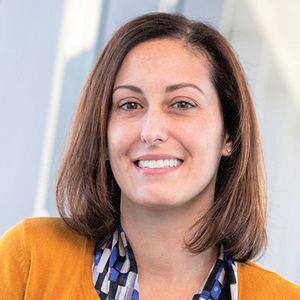

 WRITTEN BY SHELBY HUDNALL
WRITTEN BY SHELBY HUDNALL
Najee Goode may be a Cleveland, OH, native, but when it was time for college he chose “a school in the hills” and left a piece of his heart behind. Goode enrolled in engineering at West Virginia University in 2008, and committed to playing football for the Mountaineers. Advisers warned him it would be a challenge – a college athlete graduating with an industrial engineering degree – but his family kept him motivated. His father, an NFL player himself, reminded Goode he was capable of doing big things. In fact, it was at IHOP eating blueberry pancakes with his father when he found out he was going to be drafted to the NFL.
“I had the motivation to stay focused and I was able to use that motivation to help me out in school,” Goode said. “My dad played in the NFL, and he said you’ve got to be able to strain and commit to this because the next life is going to be ten times harder being a professional.”
Goode received a call from Tampa Bay Buccaneers asking if he was ready to play in the NFL, and that was the start of his professional football career. From the Buccaneers, he continued to play for the Philadelphia Eagles and Indianapolis Colts and completed his career as a linebacker with the Jacksonville Jaguars.
Like any new professional starting out, the first year can be quite the adjustment. Goode admits that being a rookie was hard.
“What people don’t realize is that at the same time you’re getting paid there is also the stress
athletes or executives in the business world,” he said. “My rookie year involved criticism and working to make the right decisions.”
He also had to adjust and learn how to take care of himself and his finances.
“The first check I received was a lot of money, and I didn’t know what I was doing, but luckily, I had my brothers and my father to help me with the experience. It was a huge learning experience – taking care of and protecting myself while also at the same time trying to learn, grow and expand.”
Goode admits that through it all, he always stayed close to West Virginia.
He may have suffered an injury but, just as the famous saying goes, another door opened and Goode was able to join the conversation of a new business venture.
Grant Wiley and Jonathan Ohliger, two WVU alums and football players, reconnected with Goode in 2014 and started talking about the idea of FinTech and sports. The three gathered in New York City and started brainstorming the concept of VEEPIO.
VEEPIO – which stands for video public offering – is a content optimization tool for the NFL and NFL Alumni mobile apps.
objects within photos and videos to link to more information, without interruption or leaving the mobile app. This new networked connection allows fans, at peak moments of interest, to convert desire into immediate action.
“A lot of people don’t know it, but our technology was actually created and distributed before Instagram Shop was,” Goode said. “We developed our code and the IP in 2014 and 2015, and that is something I am really proud of.”
In partnership with Ohliger and Wiley, Goode now serves as the company’s co-founder and chief of fan experience and engagement.

“VEEPIO has opened doors and my perspective on public speaking and communication, and the landscape of technology and understanding of the business world of FinTech,” said Goode. “Athletes are entrepreneurs by trade, by skill in our professional sport.”
Today, VEEPIO is also a resident at Vantage Ventures where they are able to amplify their business through new and innovative technologies, and work with other professional and student-based entrepreneurs.
“We are fortunate to be entrepreneurs in residence with Vantage Ventures because of the connections they provide,” Goode said. “It is an honor to work with Sarah Biller and the Vantage Ventures team, and to be a part of John Chambers’ vision with the school of business.”
At the beginning of 2022 Amazon announced it would send Alexa to space as part of Artemis I, the first in a series of increasingly complex missions that will enable human exploration of the Moon and Mars. As a collaboration between Amazon, Lockheed Martin and Cisco, many engineers are integrating Alexa into deep space missions, including a Statler College alumnus.
Brian Collins, a senior technical program manager at Amazon, works in the Automatic Speech Recognition (ASR) organization of Amazon, which builds the ASR statistical models and converts audio signals into words for Alexa. Collins graduated from the Statler College of Engineering and Mineral Resources in 2015 with a master’s degree in software engineering.
Collins and his team work to guarantee an Alexa user can receive highly accurate speech recognition, regardless of being connected to the internet or cloud-based servers. In future missions, astronauts far from Earth will be able to turn to Alexa to access real-time telemetry data and respond to thousands of missionspecific questions without being connected to the internet.
“My role in bringing ASR to NASA’s Artemis I mission included working to align program deadlines for the ASR model, natural language
understanding models, aligning with customer experience teams and hardware teams,” Collins said. “I also worked with the quality assurance teams to ensure the models had the expected performance when tested on the hardware that NASA will use in space.”
ASR models use machine learning and a subfield of artificial intelligence to transcribe spoken language. With ASR, voice technology can detect spoken sounds and recognize them as words. ASR is the cornerstone of the entire voice experience, allowing computers to finally understand us through our most natural form of communication: speech.
Collins said because Alexa normally has access to the internet, which has the benefit of large servers and fewer hardware constraints, the team was tasked with scaling the system down to run on a small desktop device without access to cloud-based servers.
“Alexa is a complex system with many components,” Collins said. “My team’s work ensures that a user of the Alexa system with no access to the internet can still be delighted with highly accurate speech recognition.”
Although the first mission is uncrewed, Artemis I is a crucial step that will allow NASA and others
A strong educational background in engineering from West Virginia University and Oregon State University has served as the foundation for Adam Al-Mulla’s work as Kuwait’s permanent delegate in the United Nations Educational, Scientific and Cultural Organization (UNESCO) since his appointment in February 2019. During his fouryear term, Al-Mulla has been stationed in Paris, according to an article published at Oregon State University.
After receiving his bachelor’s of science in chemical engineering from OSU, Al-Mulla pursued his master’s of science degree in chemical engineering at WVU. After graduating in 1998, he stayed at WVU to pursue a PhD in chemical engineering, which he completed in 2002.
After graduating, Al-Mulla remained interested in issues related to plastics and recycling and would frequently return to Morgantown to participate in research at WVU Labs.
During one such visit in the summer and fall of 2007, Al-Mulla was involved in a project funded by GE Plastics (later SABIC Innovative Plastics) that focused on developing an eco-friendly acrylonitrile-butadiene-styrene (ABS). This plastic was made by General Electric in Parkersburg,
in the industry to test technology that could be used in subsequent crewed missions to the Moon and other deep space destinations. Alexa is one of many innovative technologies being integrated into the upcoming mission as part of Callisto, a technology demonstration payload embedded into NASA’s Orion spacecraft.
Integrating Alexa into space missions can help make life simpler and more efficient for those on board the spacecraft, especially when they are buckled in or preoccupied with other tasks during the mission, Collins explained.
The Pittsburgh, PA, native has worked at Amazon for two years. Collins also focuses on aligning complex program deliverables with program deadlines while establishing technical requirements between hardware device teams, software teams and AI/science teams building ASR models.
“Knowing that a science fiction TV show inspired Amazon Alexa, there’s no better way to show off the abilities of Amazon Science and Amazon Alexa than to put Alexa in space,” Collins said. “It has been beyond my wildest dreams to know I have contributed to software which will fly to the Moon and help NASA to send humans to the Moon.”
WRITTEN BY TARA HEFFERNANWV, and was used to make computer and printer housings and other goods.
“Adam had an extremely positive outlook to life, and he always had a smile on his face,” said Rakesh Gupta, Berry Professor in chemical engineering and Al-Mulla’s WVU thesis advisor. “He showed keen interest in learning new things, and he decided to get involved in solving societal problems even if the research was not closely related to oil refining or petrochemicals.”
Over the course of his education, Al-Mulla developed an appreciation for a multicultural mindset and for teaching, as stated in a profile featuring him at OSU.
In his role as delegate, Al-Mulla has many responsibilities. According to a story published by OSU, Al-Mulla ensures UNESCO-sponsored projects and conventions are implemented as well as providing updates on cultural and educational happenings in Kuwait. He also evaluates and repairs World Heritage Sites to preserve the living heritage of various countries and works with the International Bureau of Education-UNESCO in Geneva to create educational equality initiatives and sports
programs with the intention to promote peace among nations.
Another priority area for Al-Mulla is refugee access to education, as stated in Oregon State Engineering Alumni Magazine.
“I’ve started working on projects that align with specific vision in Kuwait. One such priority is improving access to education, science and cultural involvement for people with disabilities,” Al-Mulla said. “Every two years in Kuwait, we give awards to individuals involved in initiatives that empower people with disabilities. This is a shared priority with UNESCO.”
Many people wonder about the connection between Al-Mulla’s education in engineering and his current diplomatic role.
“Having an engineering background is perfect,” Al-Mulla said. “In my role, I have to develop a problem statement, assemble a team, and find a solution to that problem, just as engineers do. The things I learned as an undergraduate, especially how to communicate my ideas and develop the best solution for the lowest cost, apply to my job every day.”
More than 40 people – including many former students – are building upon the legacy of late WVU professor Yi Luo by establishing a memorial scholarship to benefit graduate students in the Department of Mining Engineering.
Luo passed away unexpectedly Feb. 13, 2022, at the age of 64. Within weeks, his former students, colleagues, friends and family contributed enough to establish the endowed Professor Yi Luo Memorial Scholarship, and the fundraising total has since climbed to over $44,000. The scholarship will be awarded to students pursuing a master’s or doctoral degree, with preference for those in their final year of study.
“Professor Luo would be overwhelmed to know that his former students put forth such a noble effort to raise this money to establish a scholarship in his name,” Vladislav Kecojevic, Robert E. Murray Chair and Professor of Mining Engineering, said. “It’s a wonderful way to keep his name and his legacy here with the department, particularly for graduate students. He was really committed to graduate programs and to providing opportunities for graduate students to come here to the United States and pursue their education.”
A native of China, Luo came to WVU to pursue a doctorate in mining engineering in 1985 and called Morgantown home for the rest of his life. He worked for more than 30 years in the Department of Mining Engineering, where he was a celebrated researcher in the area of mine subsidence and ventilation.
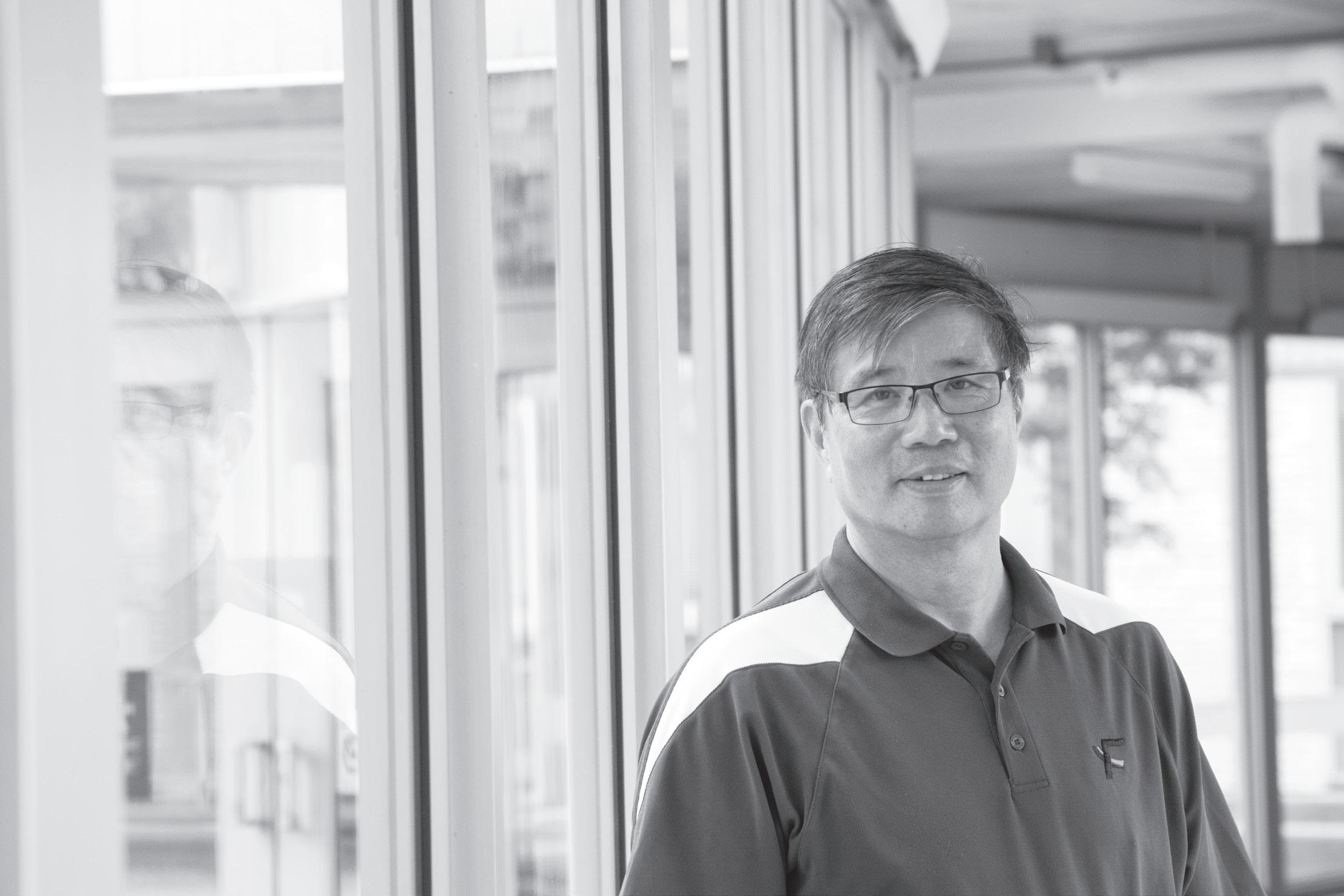
Luo was also a dedicated supporter of international students. He often returned to his alma mater in China,
Xi’an University of Science and Technology, to present lectures and discuss educational opportunities in the U.S.
Hua Jiang is among the students Luo recruited from Xi’an University. Jiang completed his PhD at WVU in 2020 and now works for the National Institute for Occupational Health and Safety in Pittsburgh, where he conducts research related to health and safety for coal miners.
“Without Professor Luo, I might have graduated in China and worked somewhere there,” Jiang said. “I would never have had the chance to come over to the U.S., which has been a very valuable, life-changing experience for me.”
Luo was always patient and supportive as he taught graduate students to be better researchers. But his support went far beyond the classroom. Jiang noted that Luo invited graduate students to play volleyball on weekends and hosted a Thanksgiving dinner for international students at his home every year, as well as picnics and other activities.
He also helped many international students find housing and get settled by offering them his almost-new secondhand furniture. Jiang recalled that Luo gave him a TV stand – and offered his couch, too – after Jiang moved to Morgantown.
“He enjoyed giving away furniture to international students to help them settle in,” Jiang said. “He constantly updated his own furniture then offered the gently used pieces to students and visiting scholars. I would also admit that this helped support his shopping habit.”
Jiang was among a core group of former graduate students who reached out to others seeking contributions for the memorial scholarship, with support from Luo’s family. Their initial goal was $10,000, a figure they surpassed quickly.
“All his students feel the same way as me: He was like a family member, not just our professor or adviser,” Jiang said. “We wanted to try to find a way to remember him. This will be forever. I know everybody definitely misses him.”
The group also raised money for a memorial bench that will be placed at WVU’s Core Arboretum later this year.
To contribute to the Professor Yi Luo Memorial Scholarship, visit secure.give.wvu.edu and specify fund number 3Z1060 as the designation for your gift. Interested donors can also contact Tammy Cavarretta, executive director of development for the Statler College, at tcavaretta@wvuf.org or 304-293-4036.

All gifts to the Professor Yi Luo Memorial Scholarship are made through the WVU Foundation, the nonprofit organization that receives and administers private donations on behalf of the University.

We are grateful to Tammy Chincheck for her gift, establishing the Stanley John Chincheck Scholarship to benefit students at WVU Statler College.
Read about what the scholarship means to her:
“Stanley John Chincheck was born outside of Wheeling, WV. His family struggled financially even to put food on the table. Stan depended on academic scholarships and summer jobs to get both his undergraduate and graduate degrees from the WVU School of Engineering. Stan had many job offers upon graduation, but decided to work for the Naval Research Lab in Washington, D.C., because he found the work to be the most interesting. He did not plan to spend his whole career at the Lab, but his success and duty to our nation’s Navy kept him there for 39 years.
Stan was an incredibly humble man. He worked such long hours, and much of his work was security sensitive, so we did not spend much time talking about work at home. It was only after I had time to go through the countless letters from various secretaries and Assistant Secretaries of the Navy that I now fully understood the impact he was having on leading his division to protect our security systems in the Navy. Time and again, his younger colleagues have shared what a great mentor he was and how he always expected the best from them.
In the end, Stan remained a loyal Mountaineer. He was a proud West Virginian and thankful for the excellent education he received from his undergraduate degrees in physics and electrical engineering, and his master’s in electrical engineering. Stan was always someone to pay it forward, so upon his sudden passing, the idea of establishing a scholarship to help future engineers on their path became the obvious way to honor his legacy.”
A cutting-edge flight simulator donated by a WVU alumnus is enhancing aerospace engineering education and research at the Statler College.
MVRsimulation donated a mixed-reality flight simulation tool to the Department of Mechanical and Aerospace Engineering. The state-of-the-art technology offers faculty and students the opportunity to explore real-time 3D simulations as they seek to meet the needs of a rapidly changing industrial environment.
Known as the fixed-wing Part Task Mission Trainer (PTMT), the system is currently deployed at a military base in Spain, where it is used to train NATO combat pilots.
“We’re really excited about this generous gift by MVRsimulation,” Jason Gross, department chair and associate professor, said. “We have many faculty in our aerospace engineering program that focus on things related to aircraft, flight research, and robotics, so we could integrate this into our research programs. We also teach
classes in flight simulation, both at the undergraduate and graduate levels, in our aerospace engineering program. We’re already thinking of ways that we could integrate this technology into our classrooms.”
The donation comes courtesy of W. Garth Smith, president and co-founder of MVRsimulation. Smith earned a bachelor’s degree in aerospace engineering from WVU in 1986. He was inducted as a member of the Statler College Academy of Distinguished Alumni of Aerospace Engineering in 2019 and serves as a member of the Department of Mechanical and Aerospace Engineering Visiting Committee.
Gross said Smith reached out to the department to share the new product, which Smith felt would benefit the aerospace engineering program at WVU.
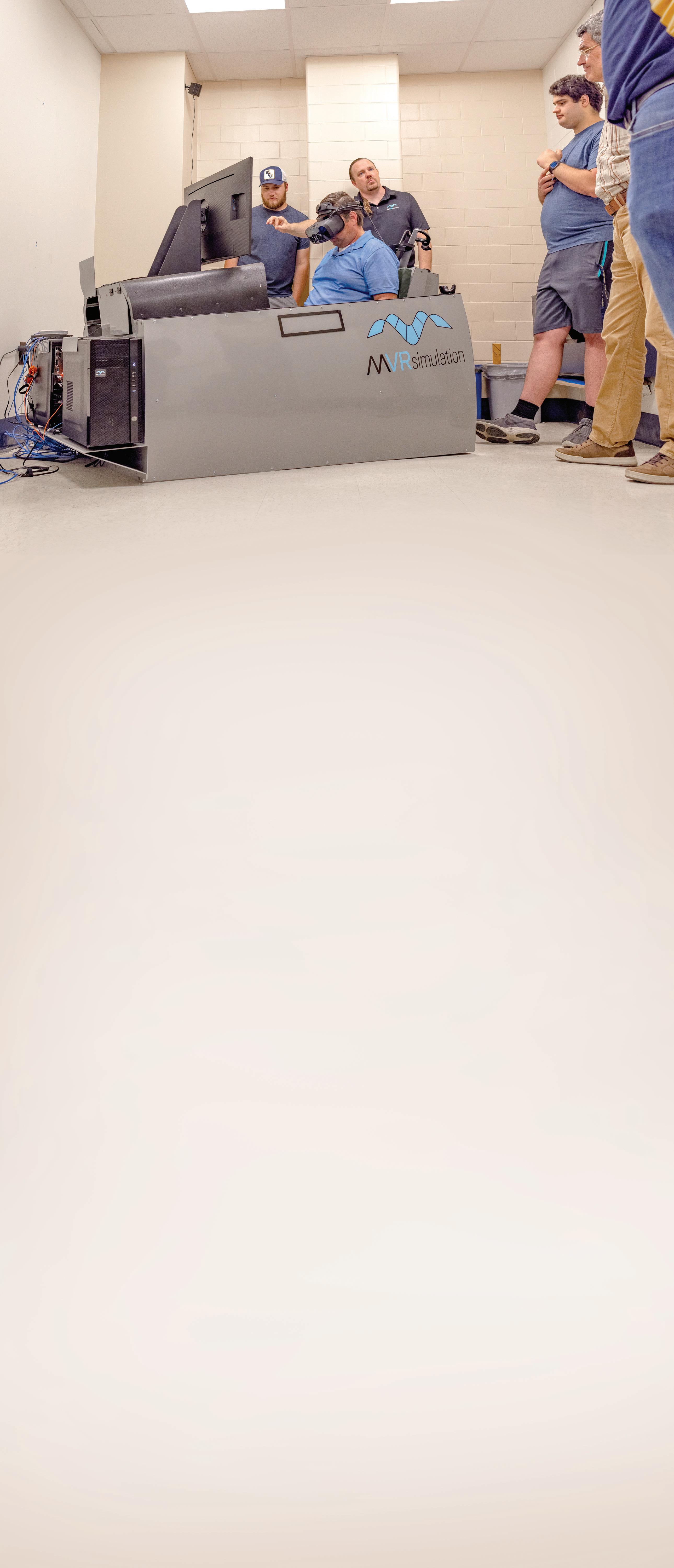
“The development of the PTMT is a testament to what a small, talented team can do when working in an environment that values original thinking and encourages the development of creative solutions for practical problems,” Smith said. “Learning to think in this way is something I was emboldened to do during my time at WVU, and hopefully this simulator will support the work of students in the department to develop their own studies and careers in the field of aerospace engineering.”
In addition to the simulator, the donation includes Battlespace Simulation Inc.’s Modern Air Combat Environment (MACE) scenario creation software, a Varjo XR-3 mixed-reality headset, and MVRsimulation’s Virtual Reality Scene Generator (VRSG) software – the same real-time visualization software used in military training centers around the world, including the U.S. Air Force Academy.
The simulator was installed in July at the Engineering Sciences Building. MVRsimulation representatives provided training for faculty upon delivery.
MVRsimulation is a privately held small virtual business that develops software and 3D content for building and rendering 3D simulated environments. Smith and partner Richard Rybacki founded the company in 1997, after working together for a U.S. Department of Defense consulting firm and recognizing the potential for PC-based real-time 3D gaming applications. MVRsimulation products are primarily used by the U.S. Armed Forces and NATO partners for military training.
The company’s gift was made through the WVU Foundation, the nonprofit organization that receives and administers private donations on behalf of the University.
Founded in 1997, MVRsimulation develops commercial PC-based software for the military simulation and training markets, featuring high-speed 3D visualization content and rapid creation of networked virtual worlds using real-world data. MVRsimulation’s real-time visual systems provide the fidelity of geospecific simulation with game-quality graphics. Users can build (with real-world photographic imagery, elevation data, and feature data) high-fidelity virtual worlds with our terrain generation tools, and render in real time, at 60Hz frame rates, the resulting virtual world with our real-time 3D visualization application, Virtual Reality Scene Generator. MVRsimulation systems are used for applications such as UAS/RPA trainers, manned flight simulators, mission planning and rehearsal, joint fires and JTAC simulation training, urban operations training, and emergency response management training. For more information, visit www. mvrsimulation.com or follow MVRsimulation on Linked In.
WVU Statler College of Engineering and Mineral Resources
Our WVU chapters of American Institute of Chemical Engineers and American Society of Civil Engineers were announced the winners of the Statler College Day of Giving Student Organization Challenge! These two organizations went above and beyond to promote the Day of Giving, and they were presented with a check by Dean Pedro Mago for their contributions!
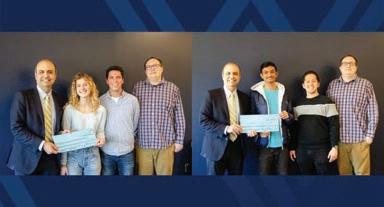
WVU Statler College of Engineering and Mineral Resources


“Thank you to all of our generous donors. We appreciate your participation in the #WVUDayofGiving to give back to the faculty and students of the Statler College. Your support will go above our expectations and go beyond today for a stronger tomorrow. Let’s go!” - Dean Pedro Mago

The WVU Mountaineer Robotics team placed 10th out of 36 teams from 10 different countries in the final round of the University Rover Challenge (URC) that took place in Utah on June 1-4 at the Mars Desert Research Station. URC tasks the students with designing and building the next generation of Mars rovers that will one day work alongside astronauts exploring the red planet. Led by Faculty Adviser Yu Gu, the team is comprised of 40 undergraduate students and three graduate students from the Department of Mechanical and Aerospace Engineering and the Lane Department of Computer Science and Electrical Engineering. The team started on their winning rover design in the fall 2021 semester and went through an iterative design process that built components in computer-aided design software.
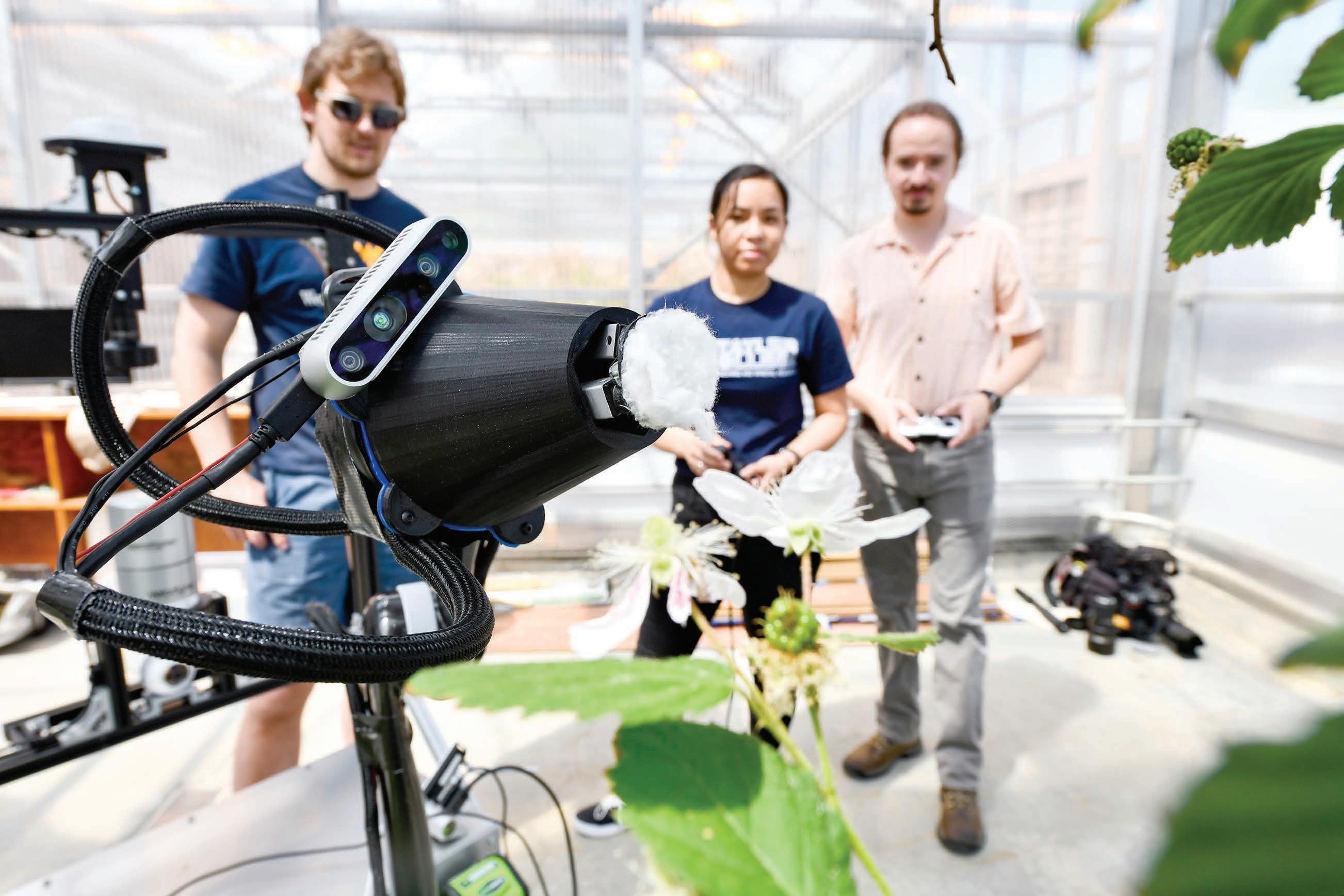
The WVU team comprised of 38 undergraduate aerospace engineering students received the Best in Theme award at the NASA’s Revolutionary Aerospace Systems Concepts –Academic Linkage (RASC-AL) competition for their Lunar Exploration and Artemis Development Portable Utility Pallet (LEAD PUP) design. The competition RASC-AL aimed to develop new concepts that leverage innovation to improve NASA’s ability to operate on the moon, Mars and beyond. The LEAD PUP is the University’s proposal for a portable utility pilot design to extend the range of autonomous and crewed missions by providing communications to the eventual Artemis base and lunar gateway. It will assist future astronauts by acting as a power supply for autonomous rovers and equipment.
Robin Ames, 37, of Bruceton Mills, WV, passed away unexpectedly on Feb. 17, 2020. He was killed by a distracted driver while cycling near his home. Ames was born in Tanner, WV. He was a student in the Statler College of Engineering where he studied mechanical engineering from 2001-2007, having graduated with honors and earning both his bachelor’s and master’s degrees. Upon graduating in 2007, Ames went on to work for the Department of Defense in Lexington Park, MD, and later for the Department of Energy at the National Energy and Technology Laboratory in Morgantown, WV. Ames is survived by his wife Karrah and his two daughters Charlotte and Elliette, as well as his parents Frank and Kathy Ames, sister Emily Mallon and family and brother Morgan Ames. His family created the Robin Ames Foundation to honor his life and legacy while also raising awareness of the consequences of distracted driving. More information about the Robin Ames Foundation can be found at www.ramesfoundation.org
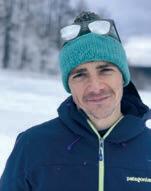
Charles Chandler, 90, of Pickens and Morgantown, passed away on March 26, 2022. A veteran, he served in the U.S. Navy during the Korean War. Afterwards, he received a degree in mechanical engineering from WVU. Chandler worked in and owned multiple machine shops that serviced regional coal mining companies. He is survived by his wife, Charlotte H. Chandler; children, Ann, Chuck, Fred and John Chandler; stepdaughter, Teresa Juristy; and several grandchildren, cousins, nieces
John R. Craynon 61, of Morgantown, passed away on Saturday, April 16. A Kentucky native, he had a passion for mining engineering and taught at West Virginia University and his alma mater Virginia Tech. Craynon is survived by his four children: Johanna O’Hara, Megan Craynon, Sarah “Colleen” Etherton, and Robert Craynon, six grandchildren and his siblings Mary “Eddie” Craynon and Brian Craynon.
John Loth, 88, of Morgantown, passed away on May 13, 2022. Loth received his bachelor’s, master’s and PhD in mechanical engineering at the University of Toronto. In 1967, he joined WVU and rose to professor of mechanical and aerospace engineering. Loth’s research included many groundbreaking discoveries and inventions, including the first foam-based solar panel, which has been installed at the top of the WVU engineering building, the first circulation-controlled flight demonstrator and the first wind turbine with a centrifugal overspeed control. He received seven awards at WVU and was an inaugural member of the College of Engineering Academy of Outstanding Teachers. Motivated by his love for teaching and advising students, Loth continued as a professor until the age of 80.

, 64, passed away unexpectedly on Feb. 13, 2022. Born in rural Xixiang County in Shaanxi, China, to a family of educators. Through his brilliance and hard work, he moved to America in 1983 to pursue higher education. In 1985, Luo moved to Morgantown to obtain his PhD in mining engineering at WVU and fell in love with the town and university. He would remain here for the rest of his life, working as a professor at his alma mater. Luo is survived by his children, Kevin and Ruth; siblings, Hui and Kai; and many nieces and nephews.

A scholarship fund has been established by WVU alumni to support students pursuing a master’s or doctoral degree. The group also raised money for a memorial bench that will be placed in WVU’s Core Arboretum. For more information see page 38.

Betty Miller, 95, of Morgantown, passed away on Feb. 16, 2022. After being the only woman who graduated with an undergraduate degree in chemical engineering in 1947, she accepted a position in the laboratories of Celanese Corporation of America in Cumberland, MD. She was later transferred to Rock Hill, SC, where the company was opening a new plant. During the eight years with Celanese, she was promoted to supervisor of the chemical testing laboratory and finally to general supervisor of all laboratories.
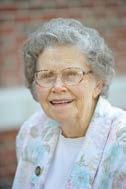
In 1956, Miller returned to WVU to earn a master’s degree in mathematics. After one year as a graduate teaching assistant, she was appointed as an instructor in the Department of Mathematics. In 1970, Miller was promoted to assistant professor. In 1976, she was promoted to assistant professor. In 1992, she retired as associate professor emeritus.
In 1994, Miller received the University’s highest recognition for service to WVU when she was elected to the WVU Order of Vandalia as well as being inducted into the Academy of Chemical Engineers. Miller is survived by many nieces and nephews.
West Virginia University

Benjamin M. Statler College of Engineering and Mineral Resources
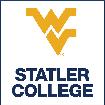
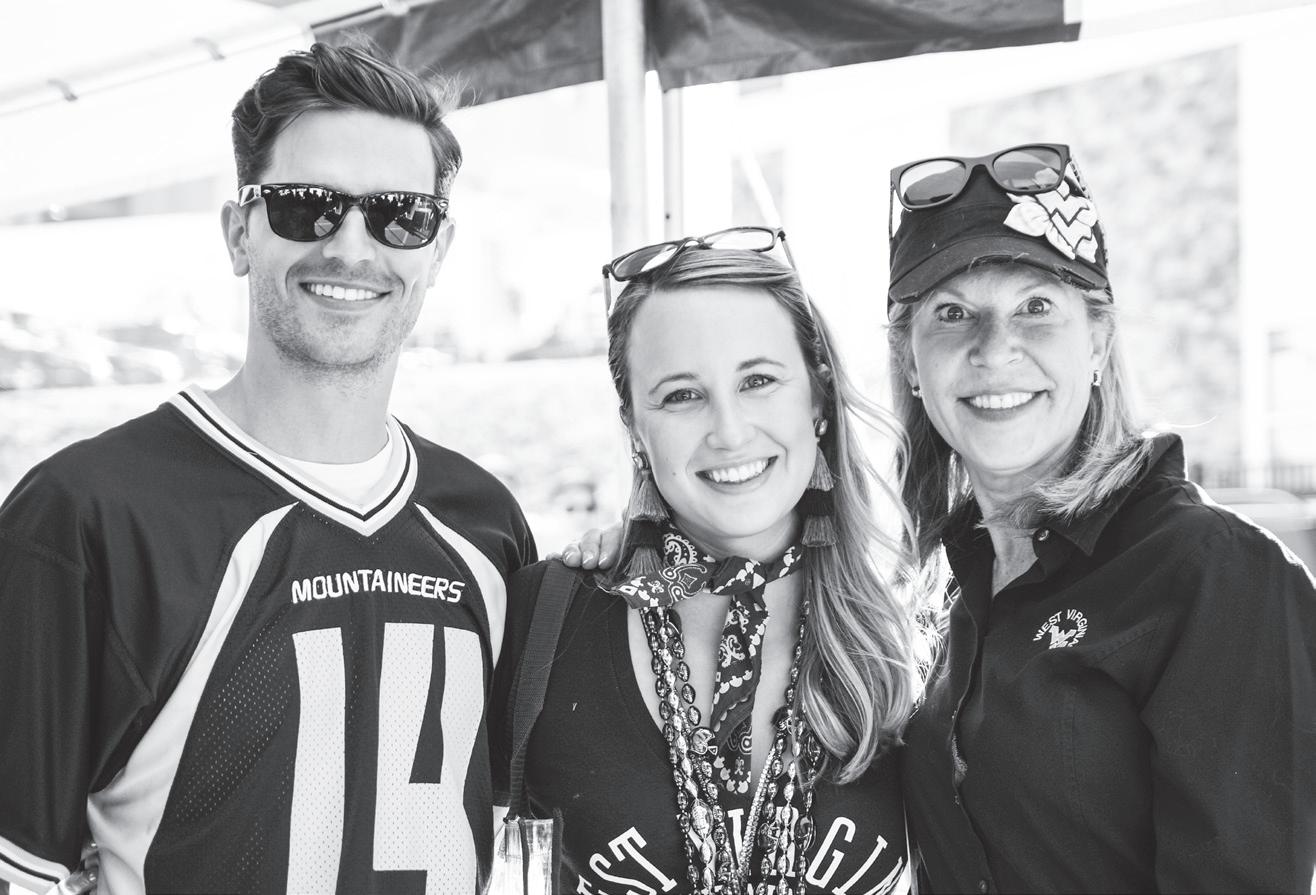
PO Box 6070, Morgantown, WV 26506-6070
Return service requested